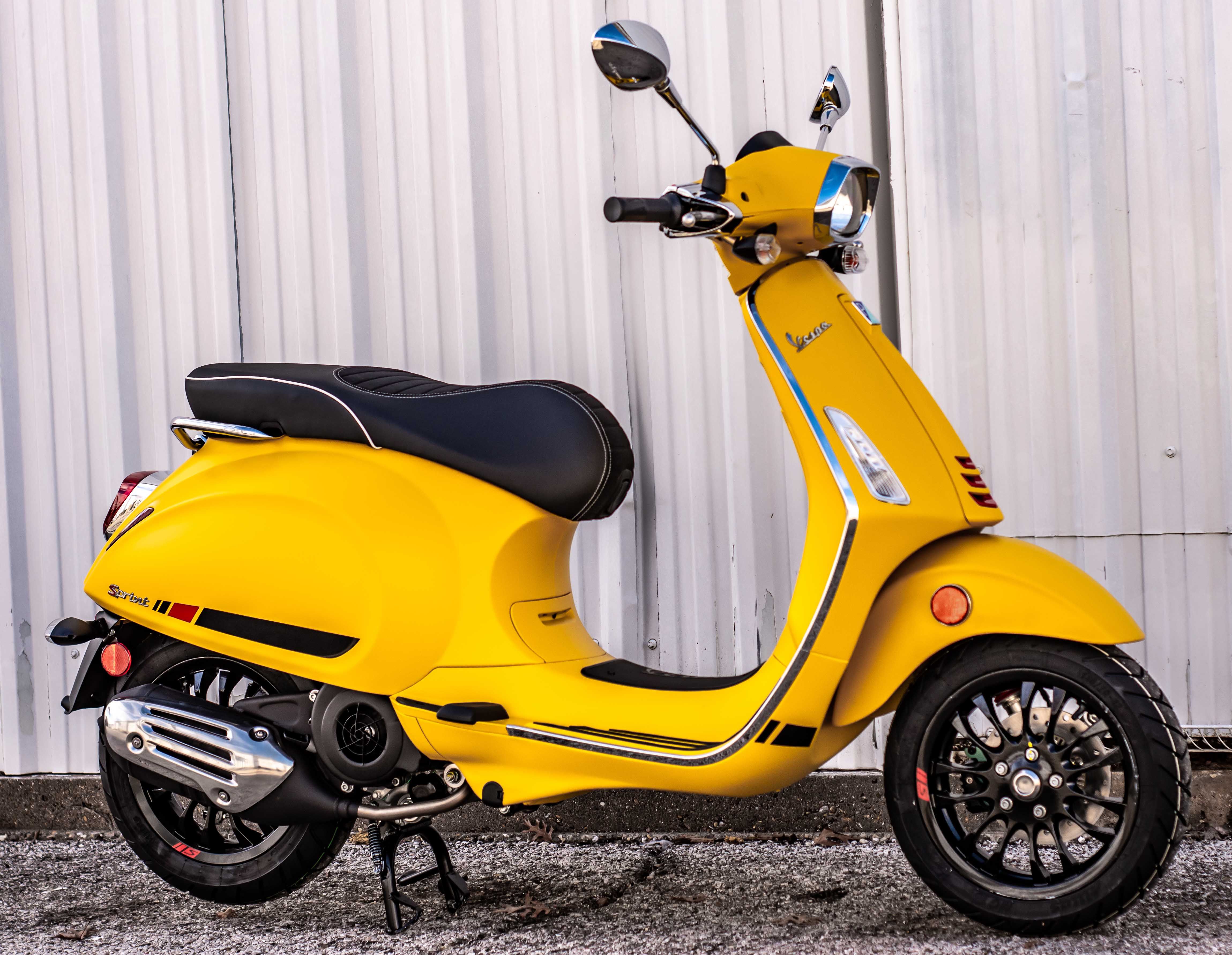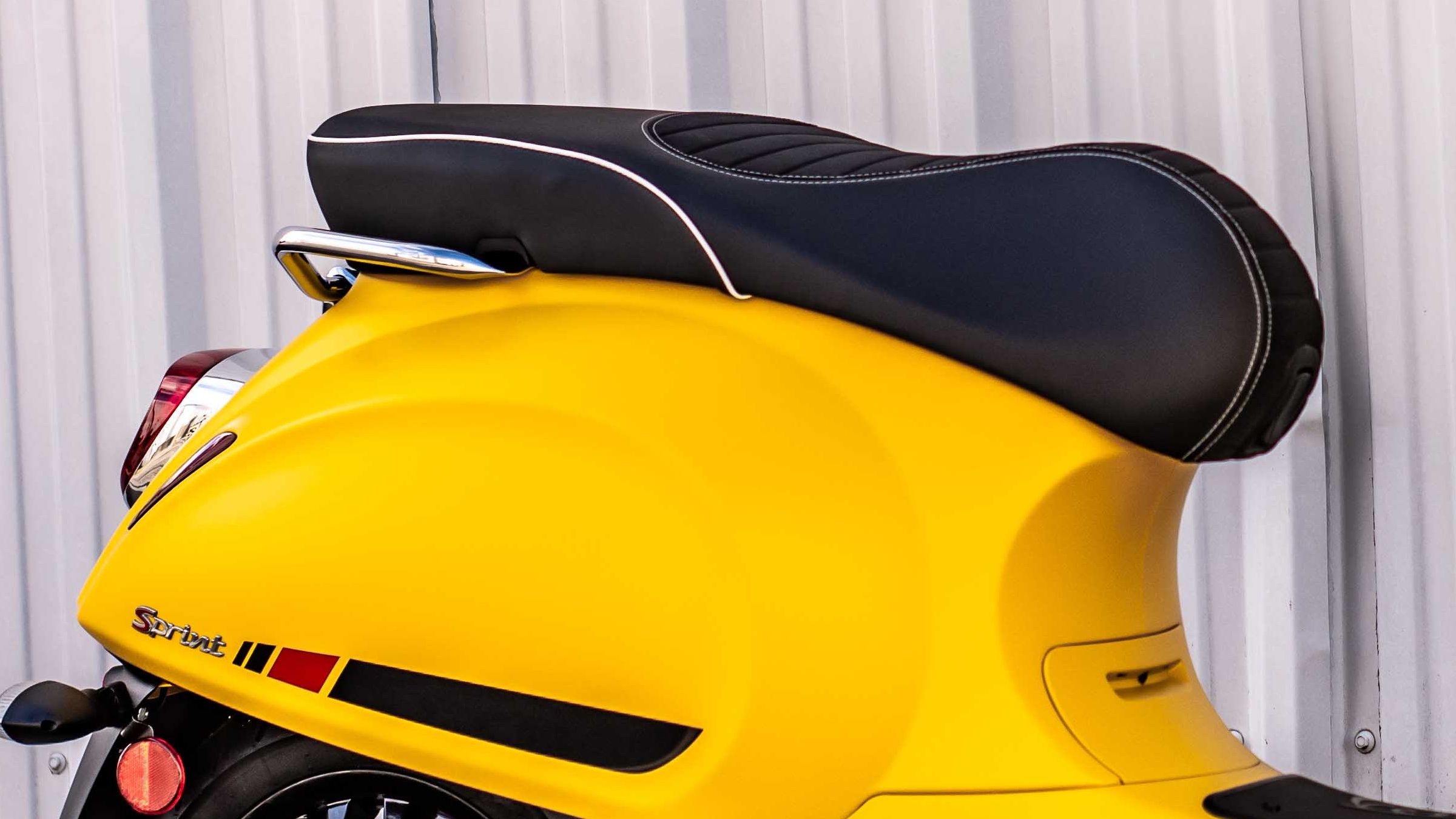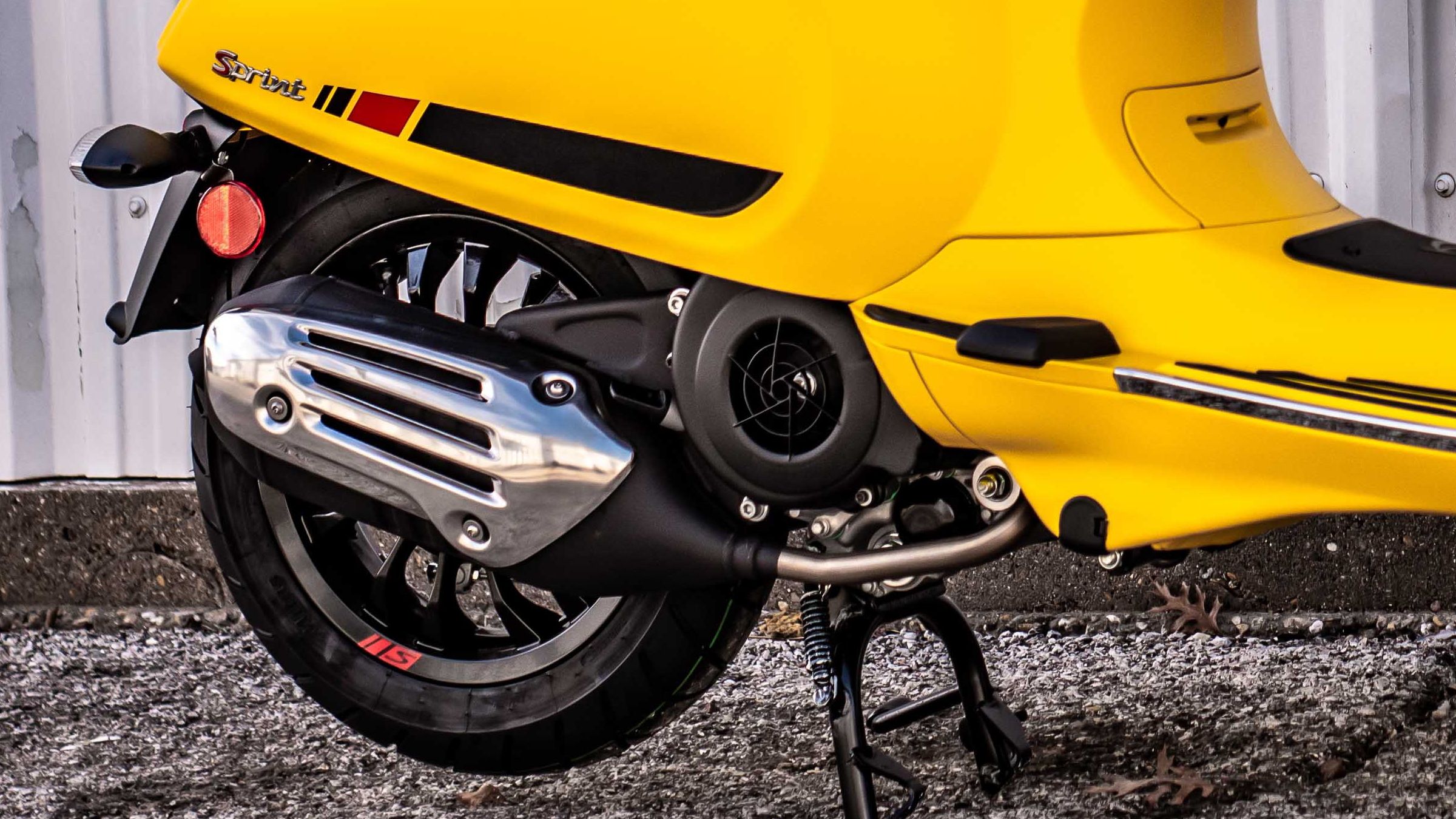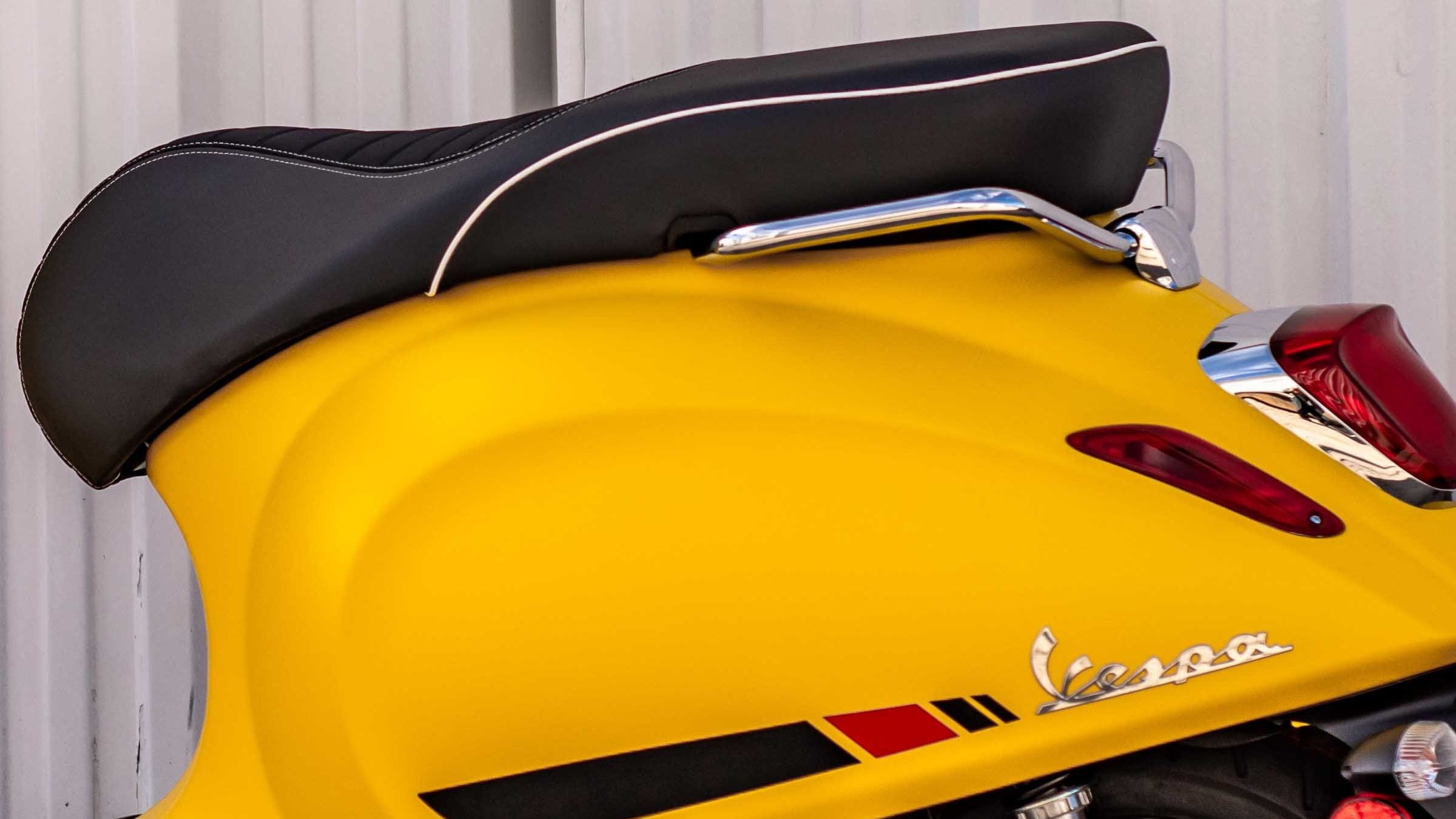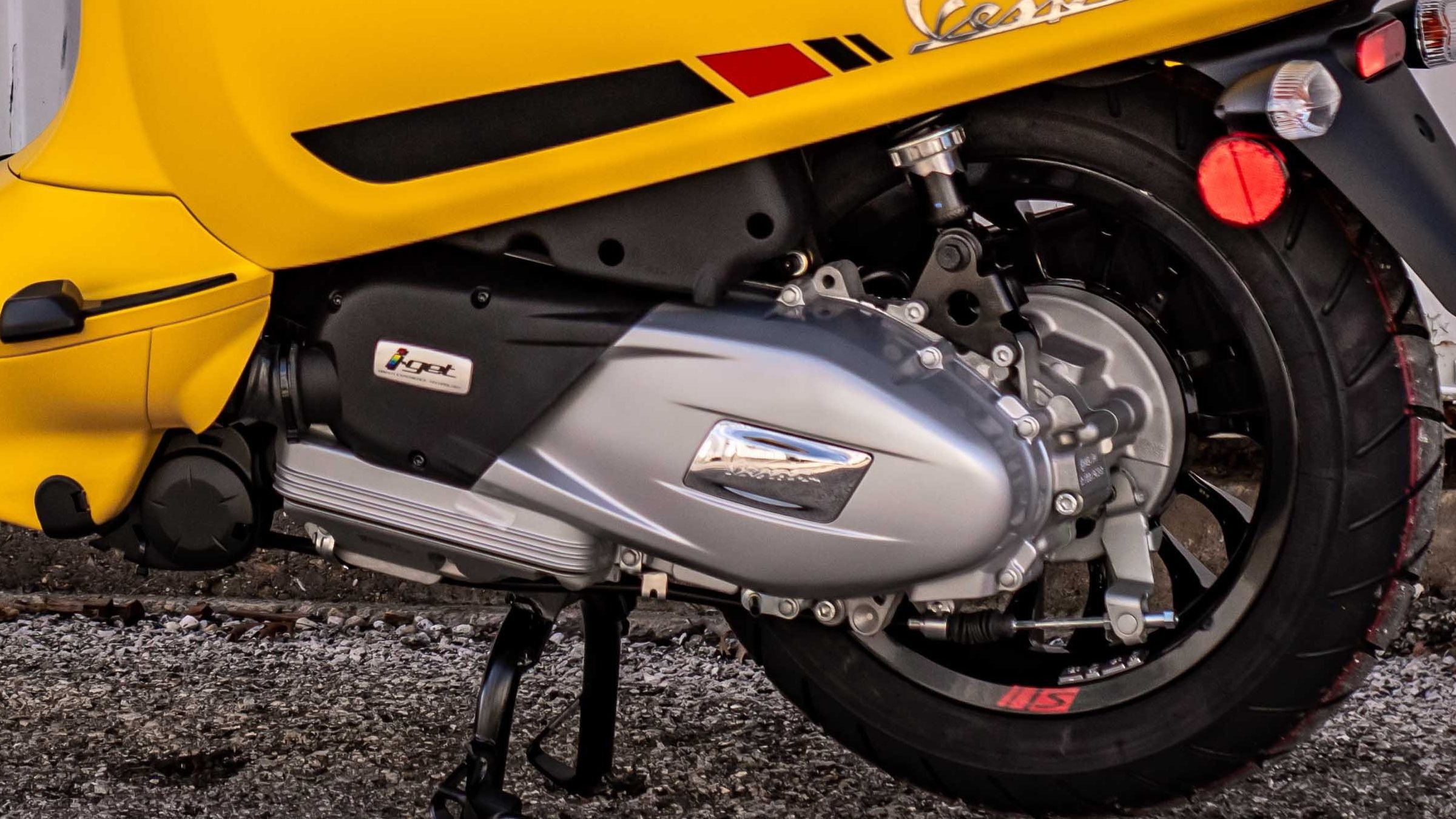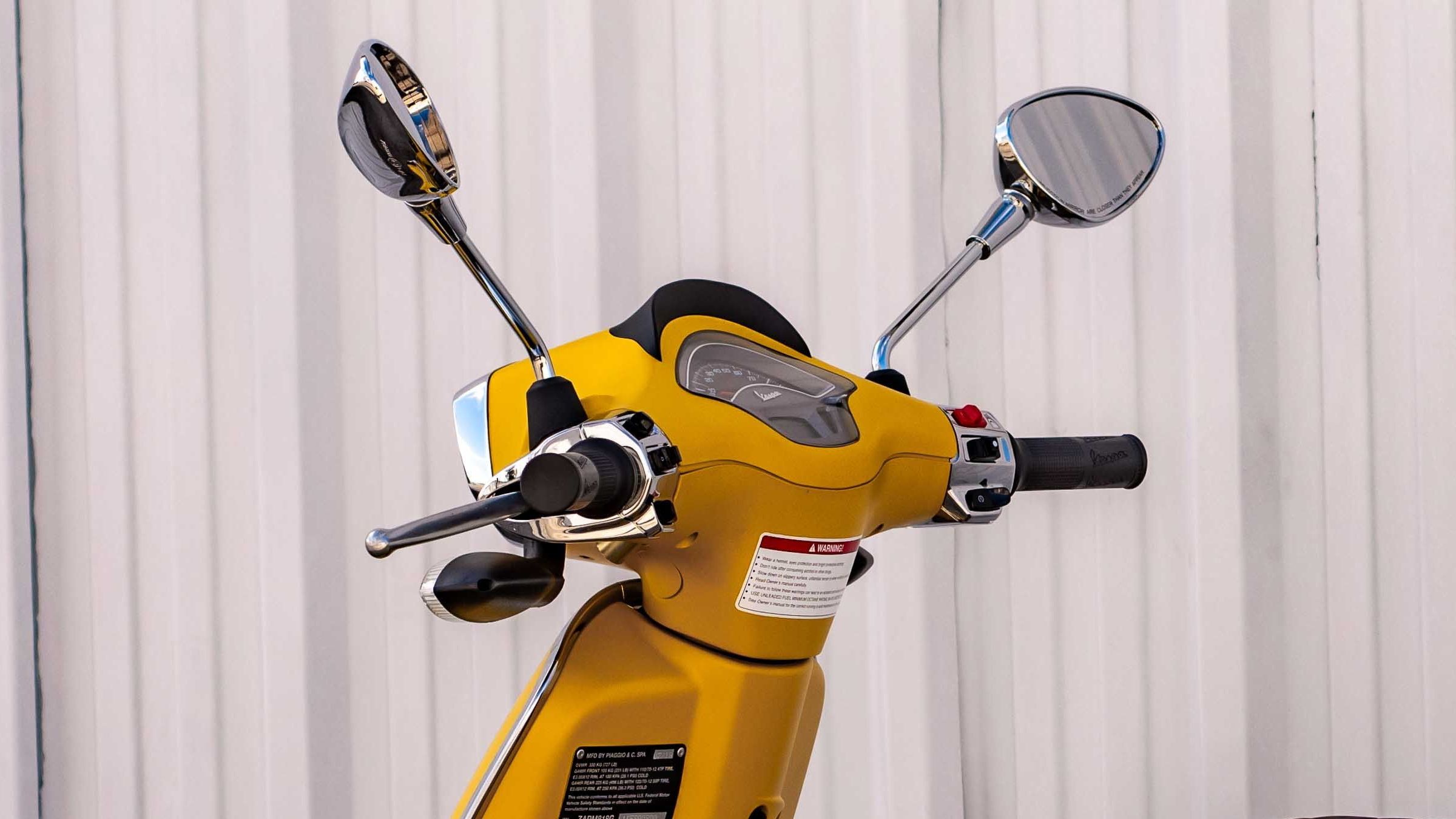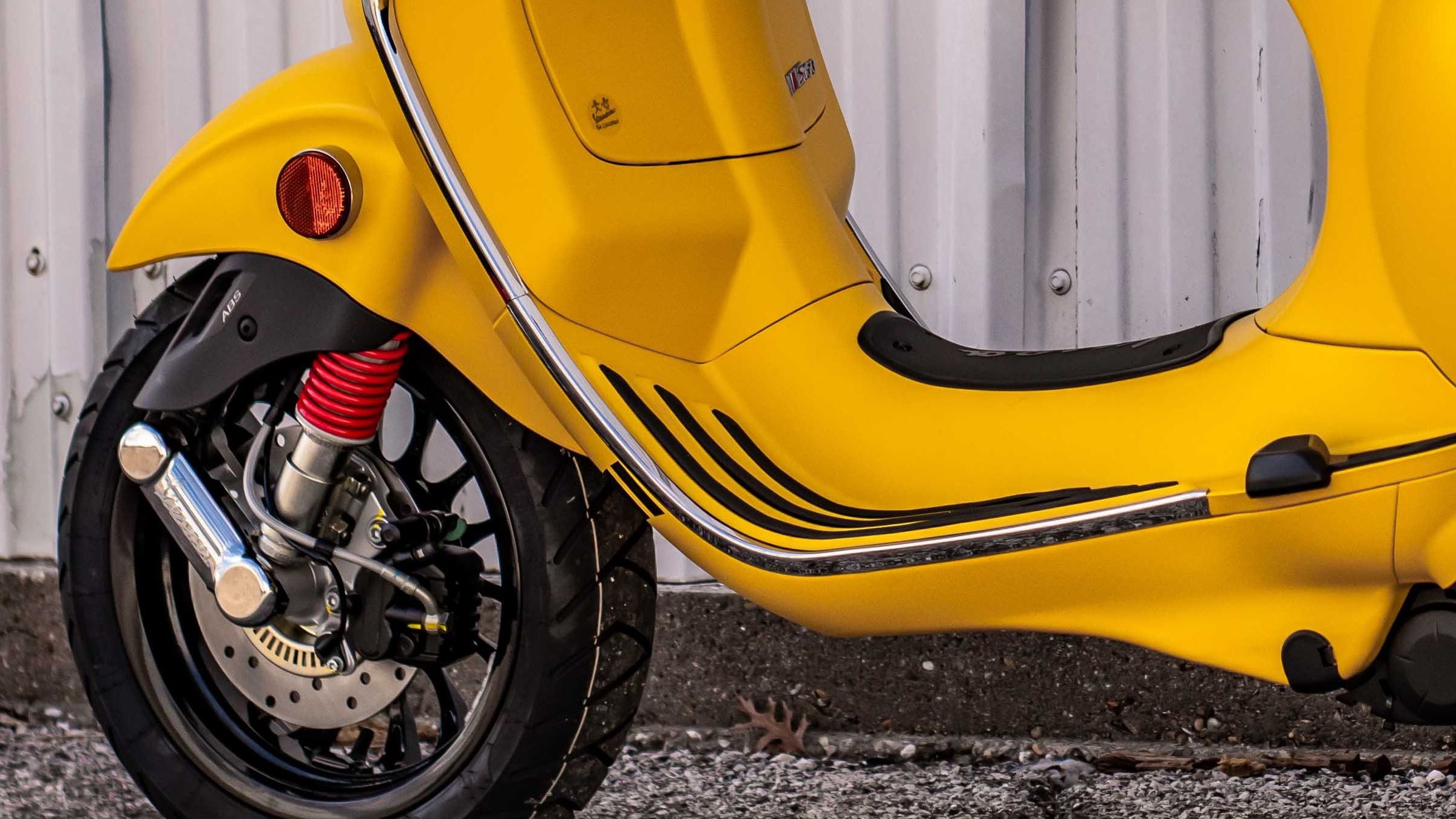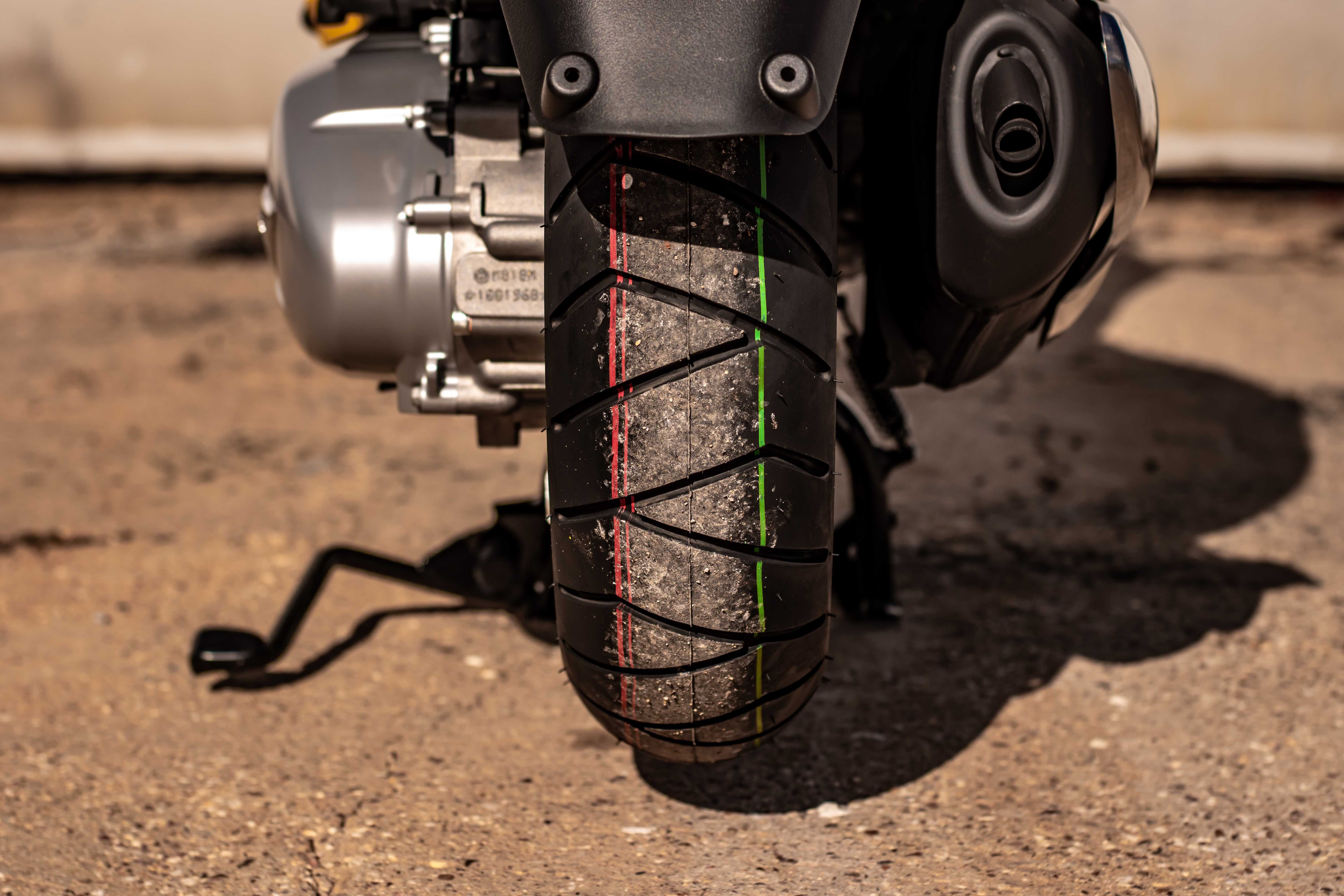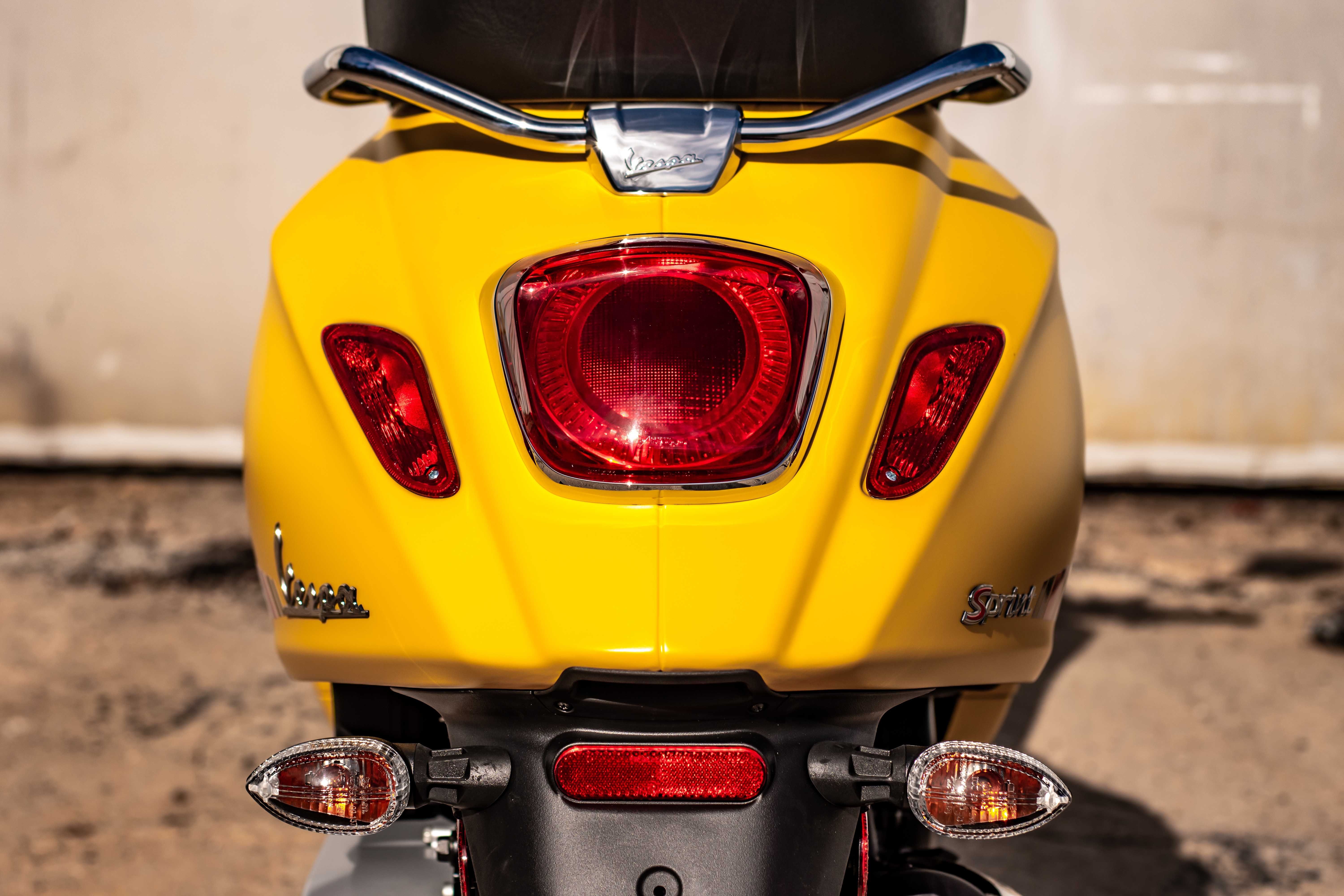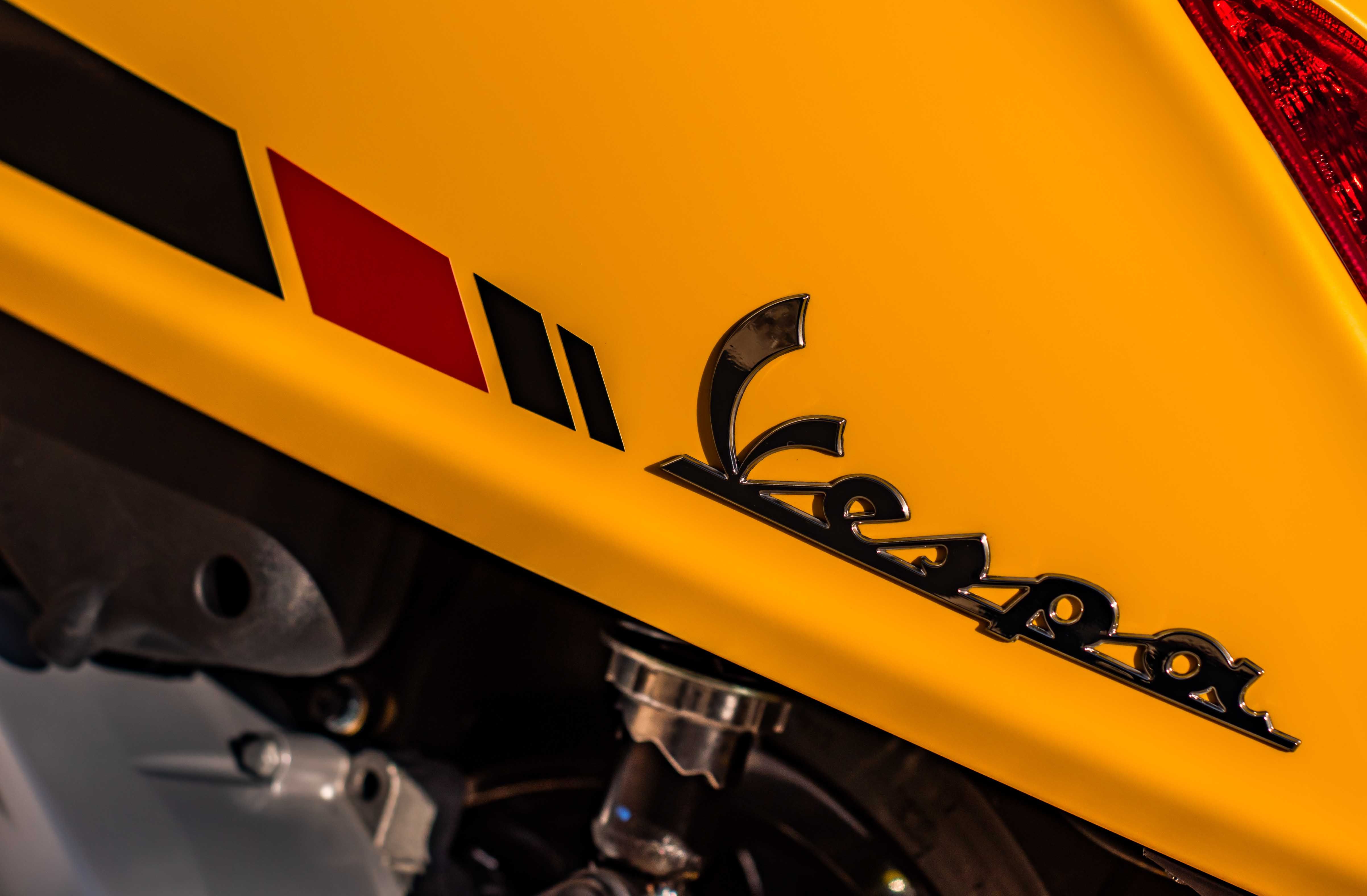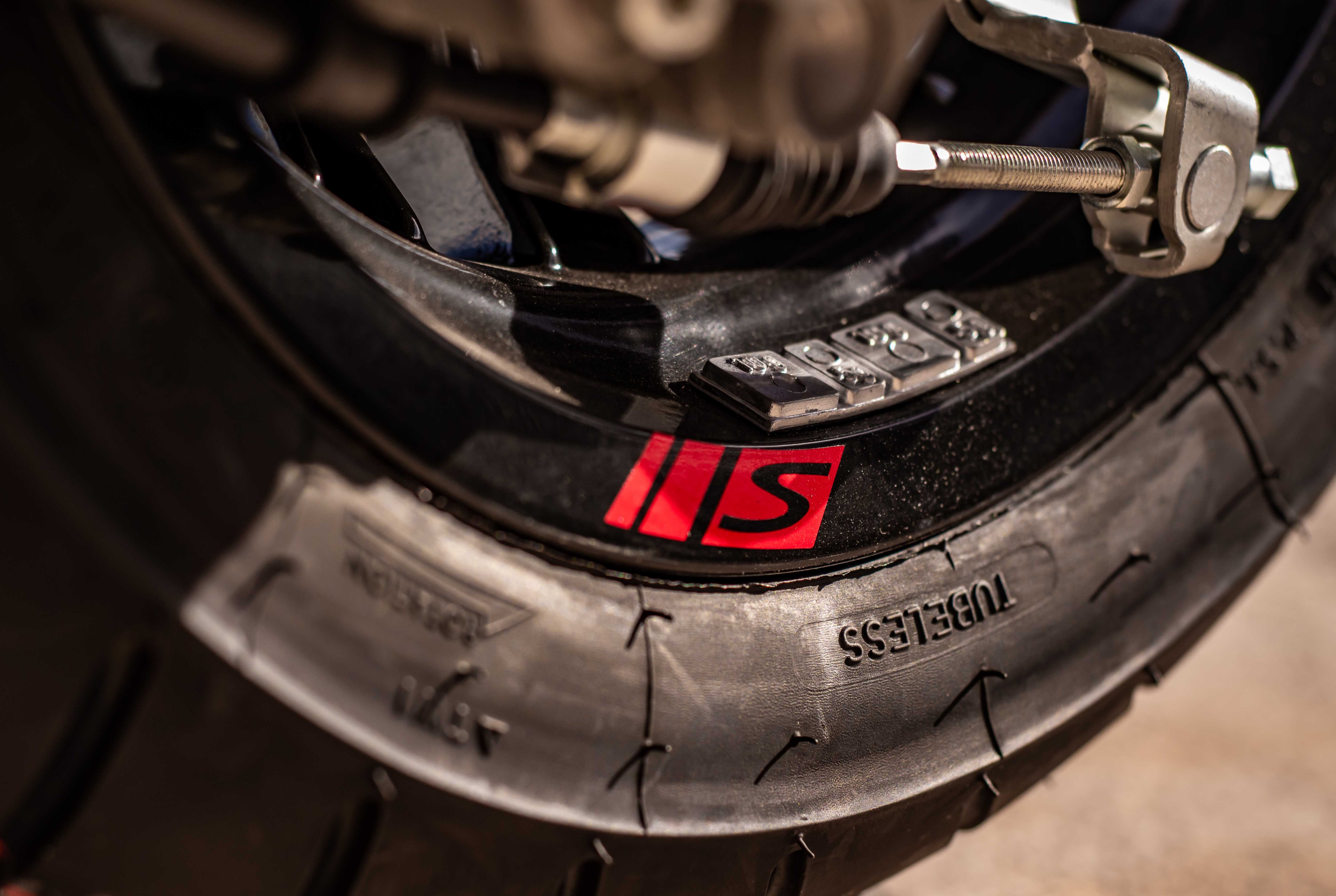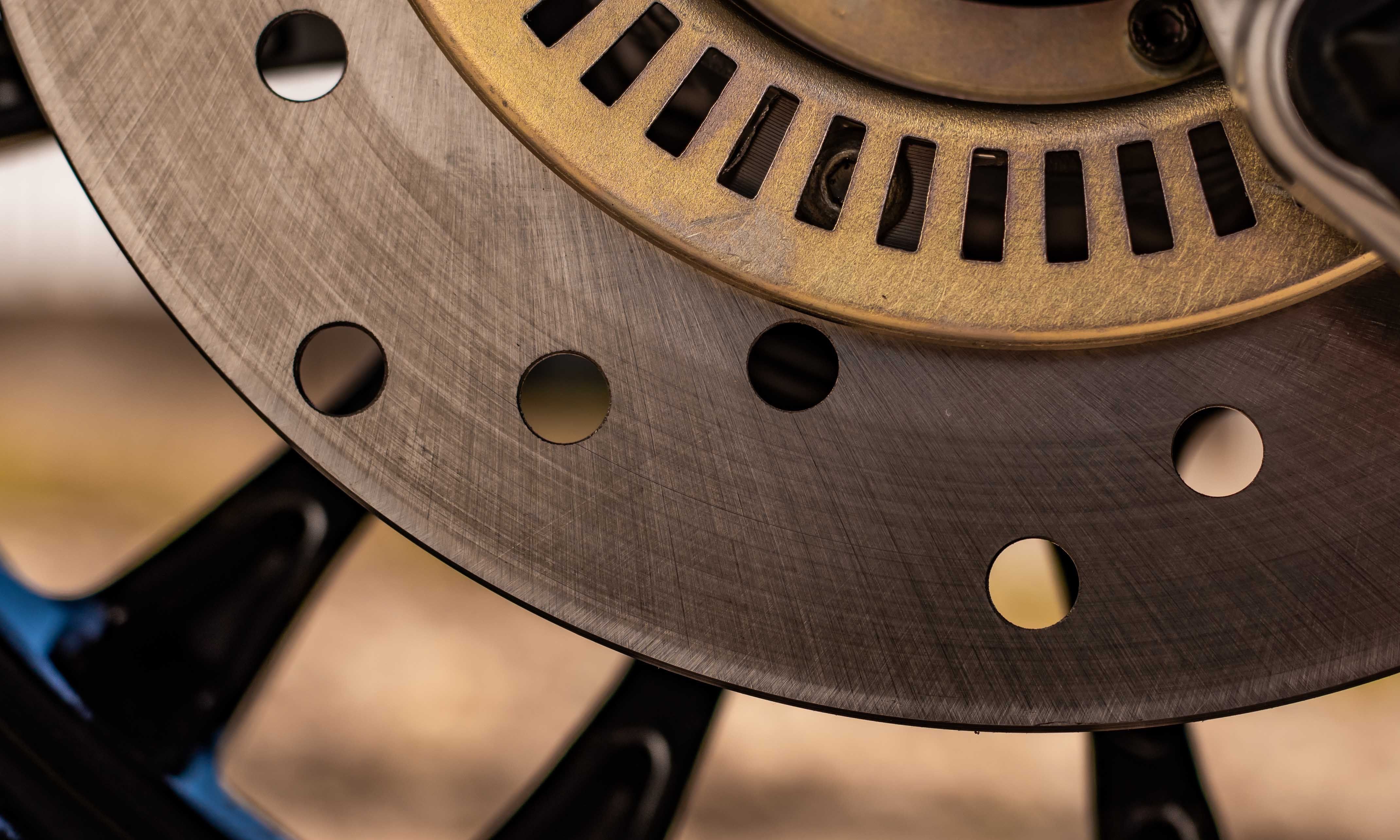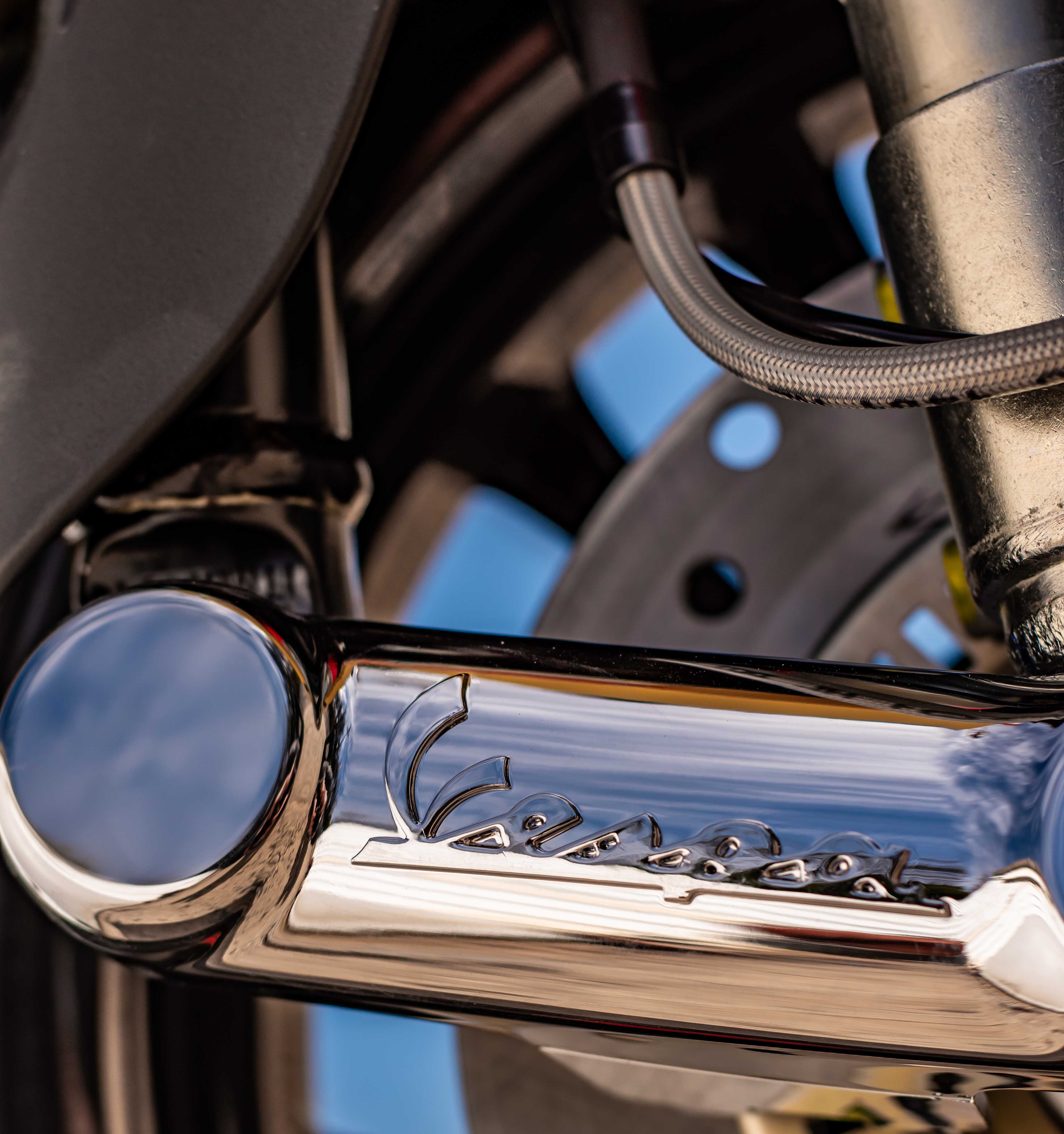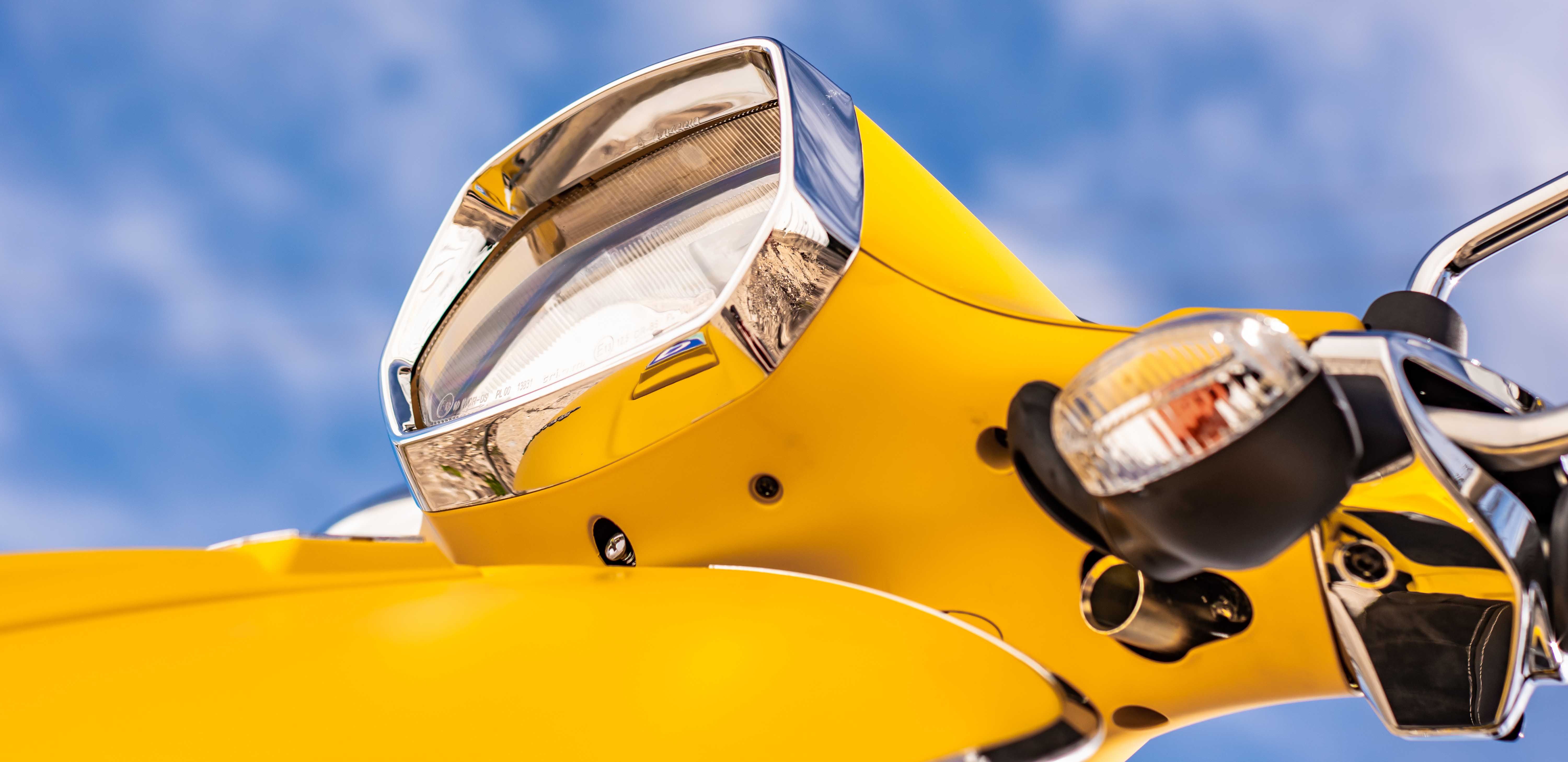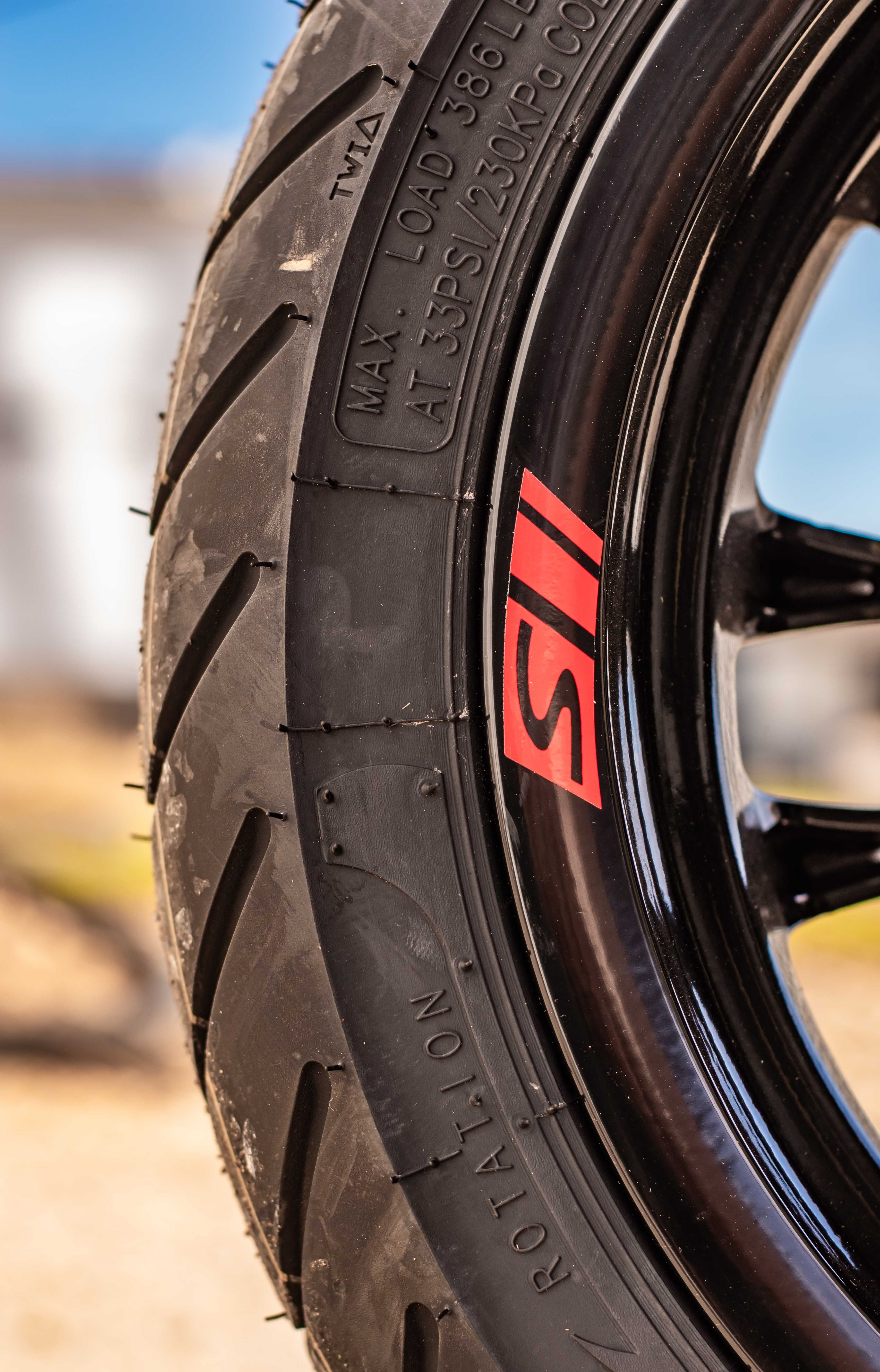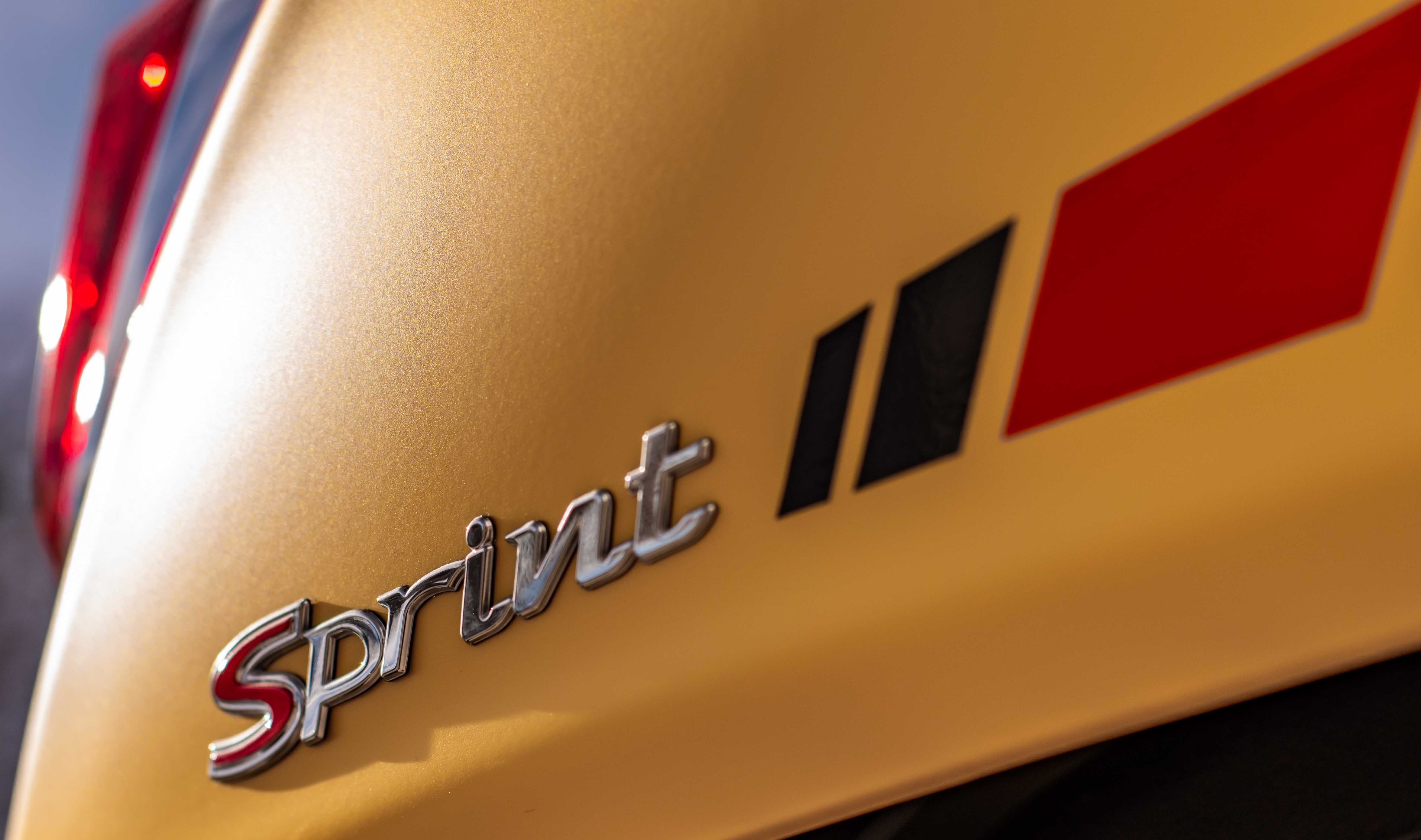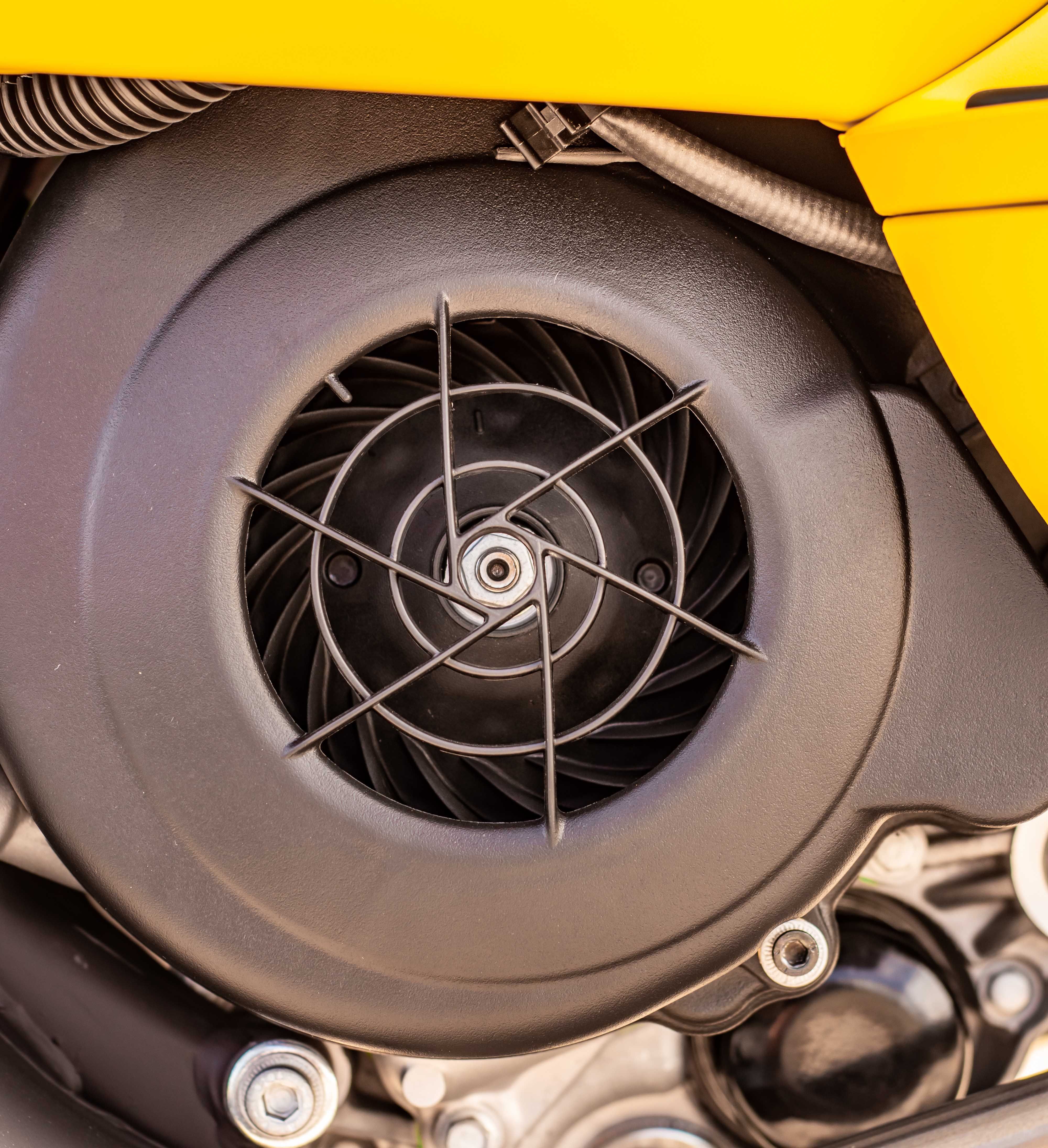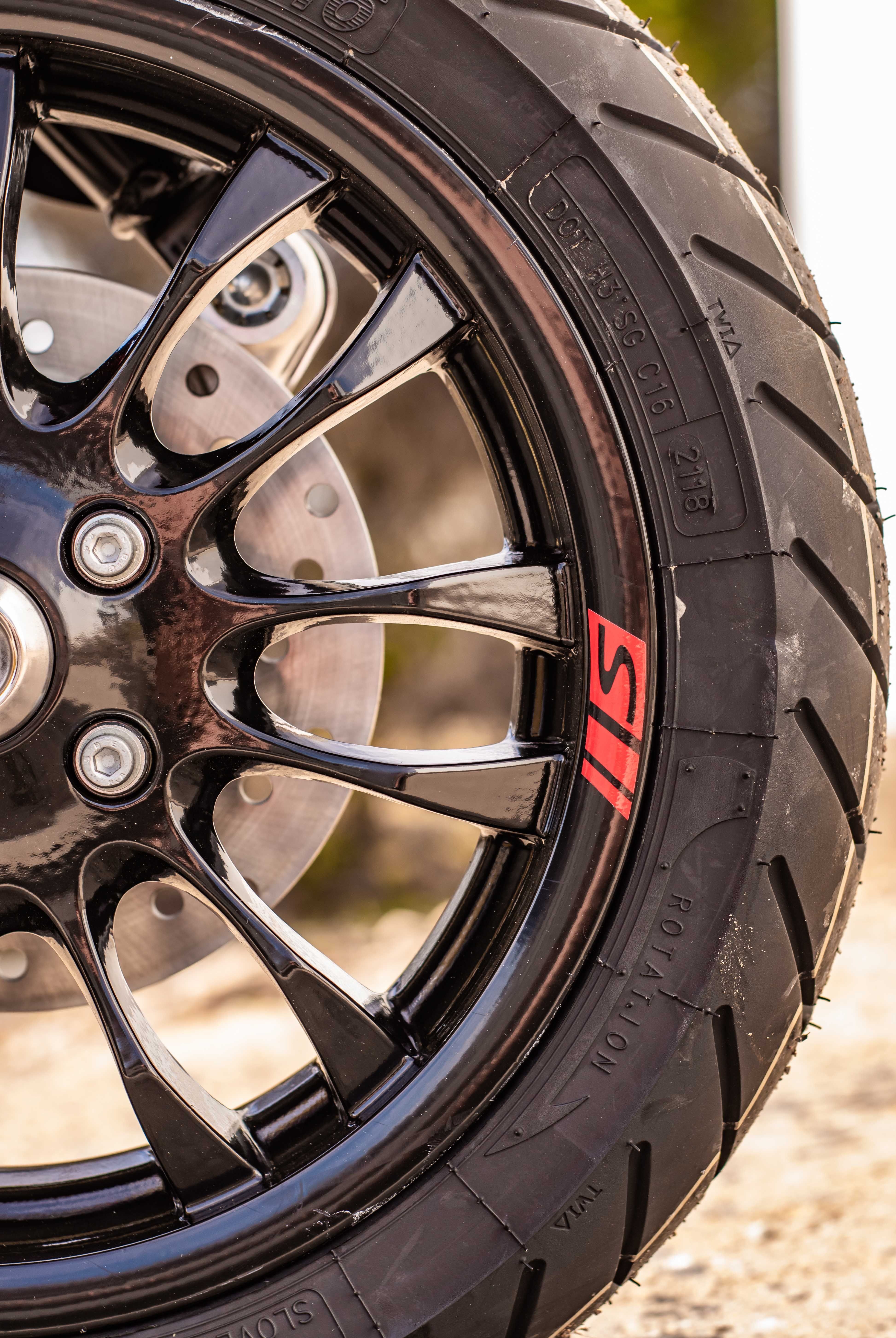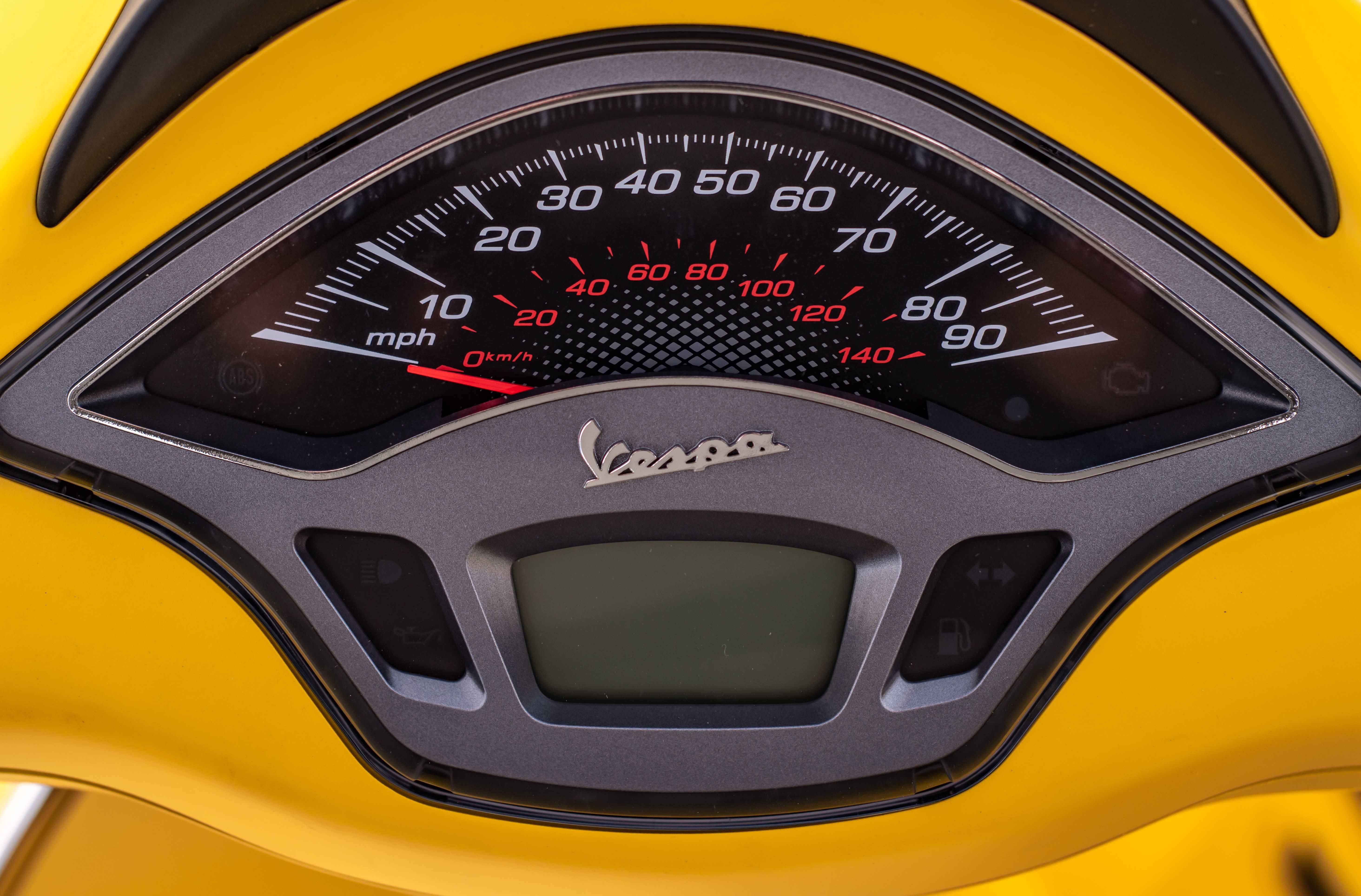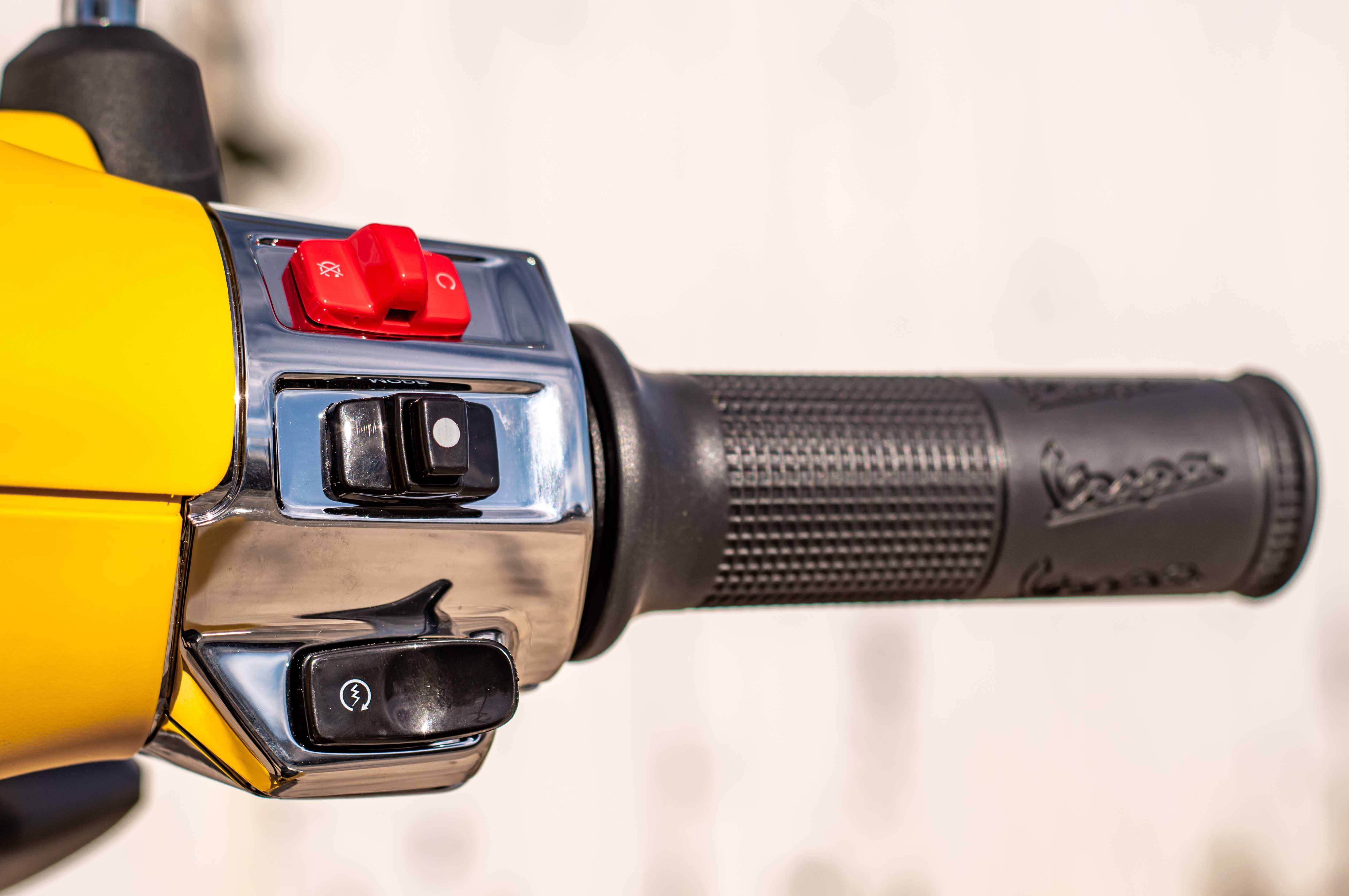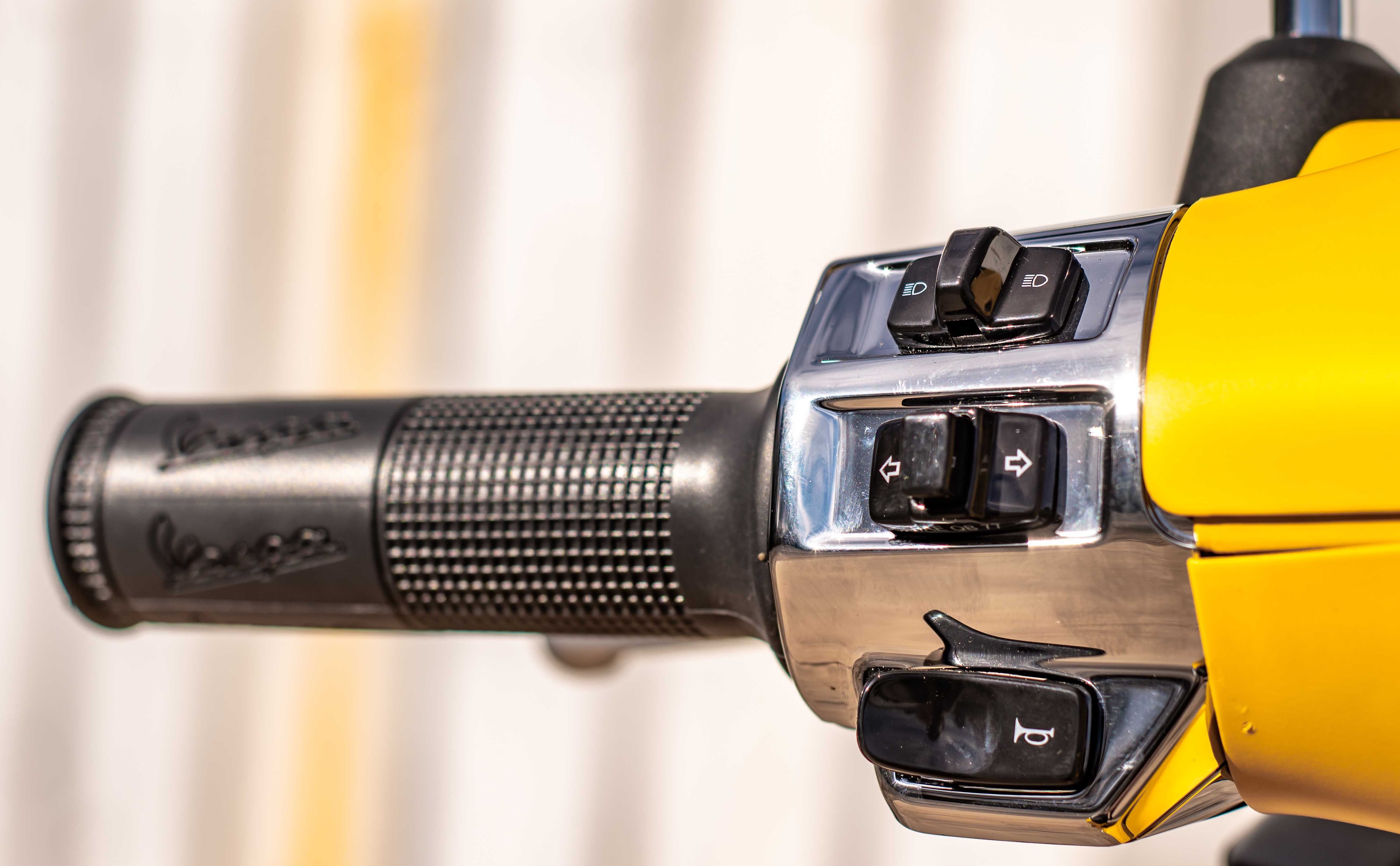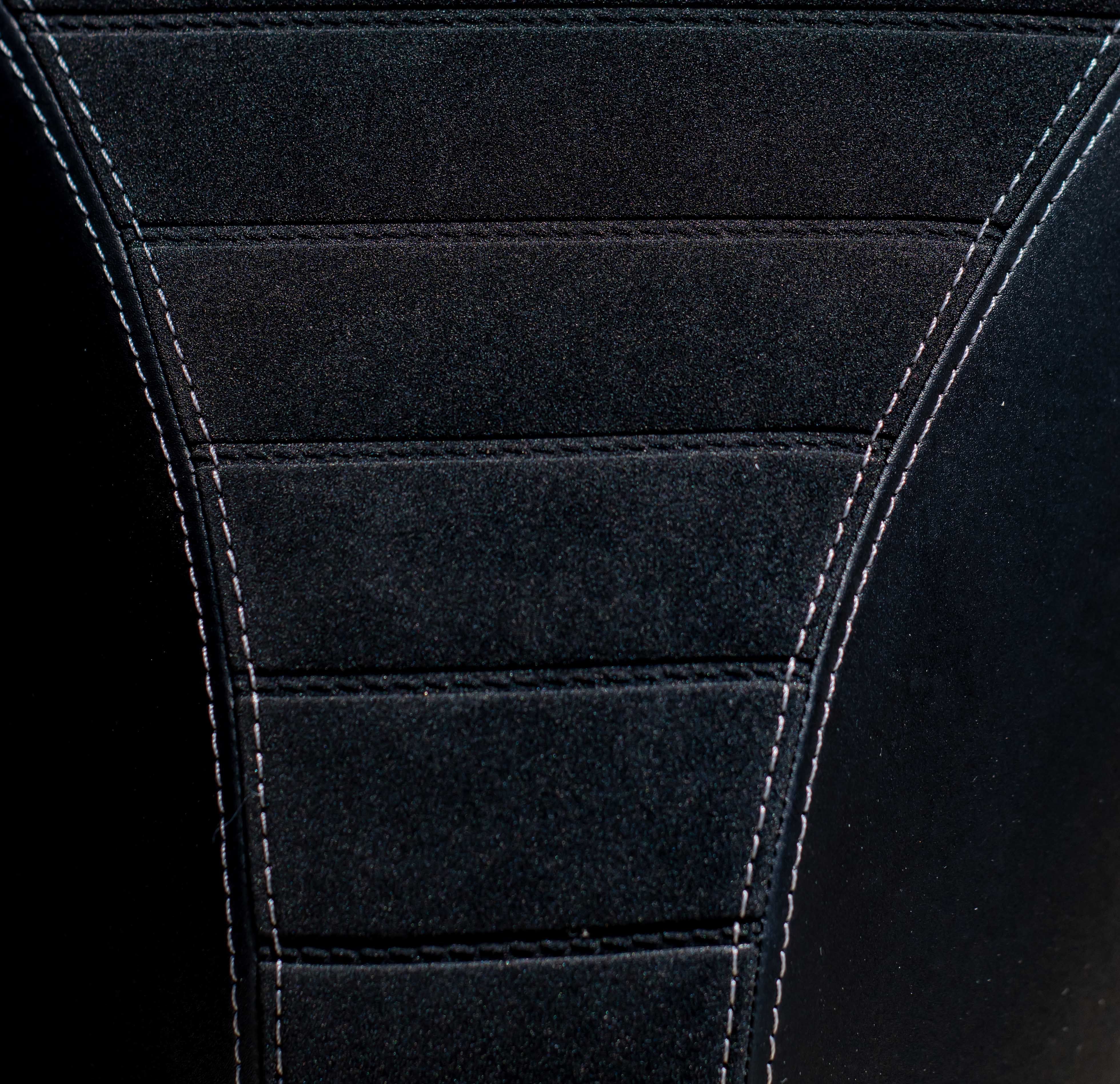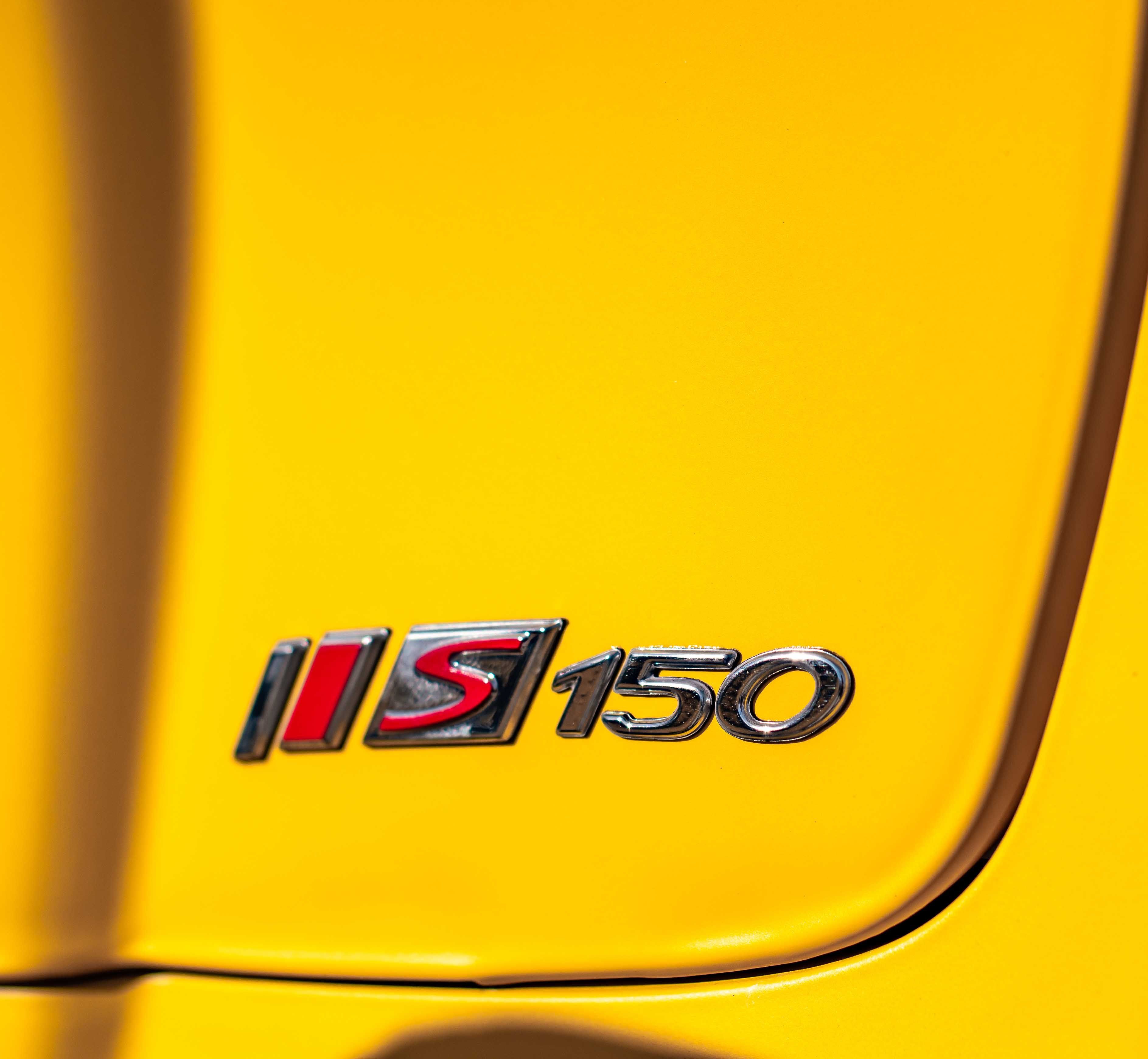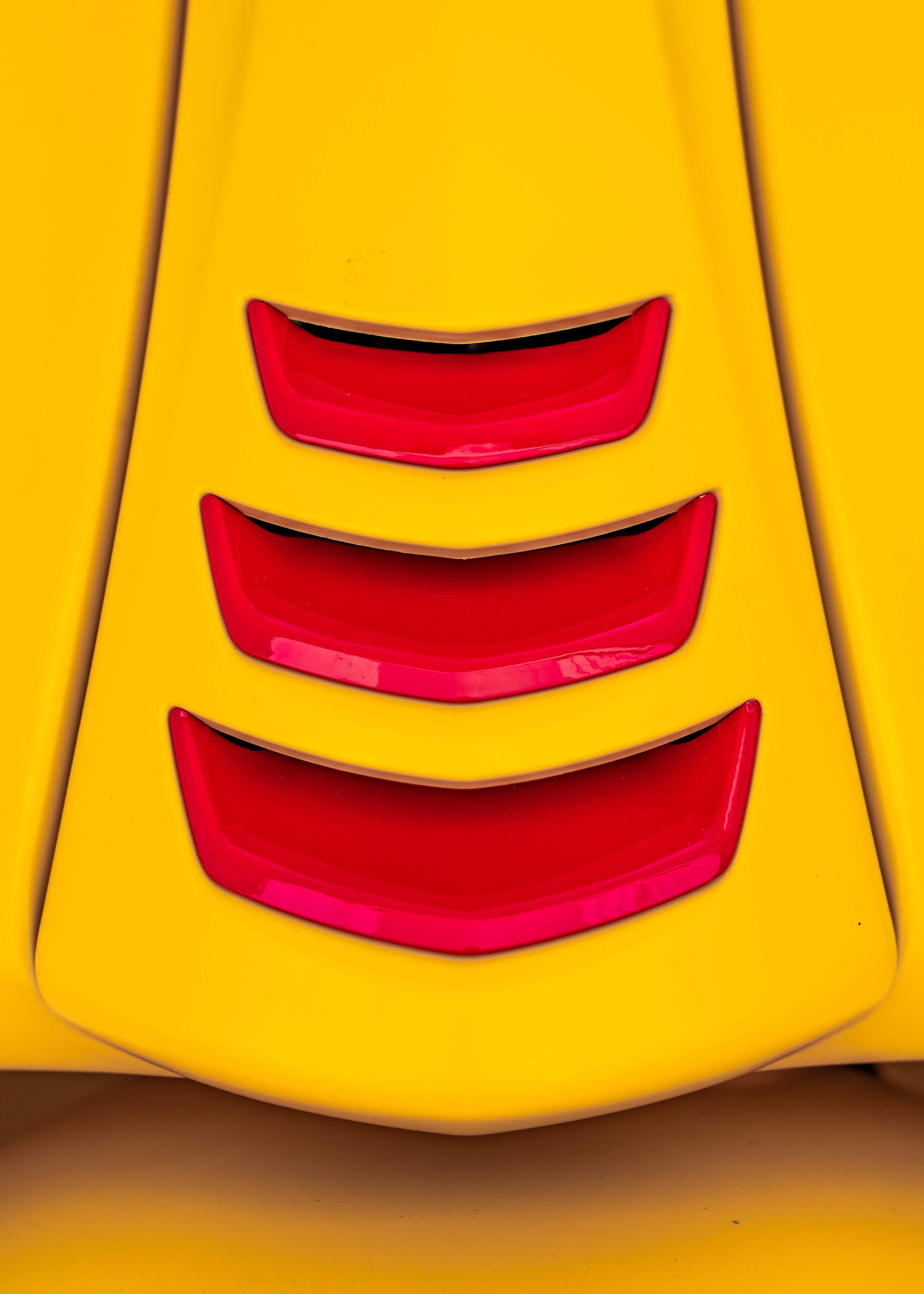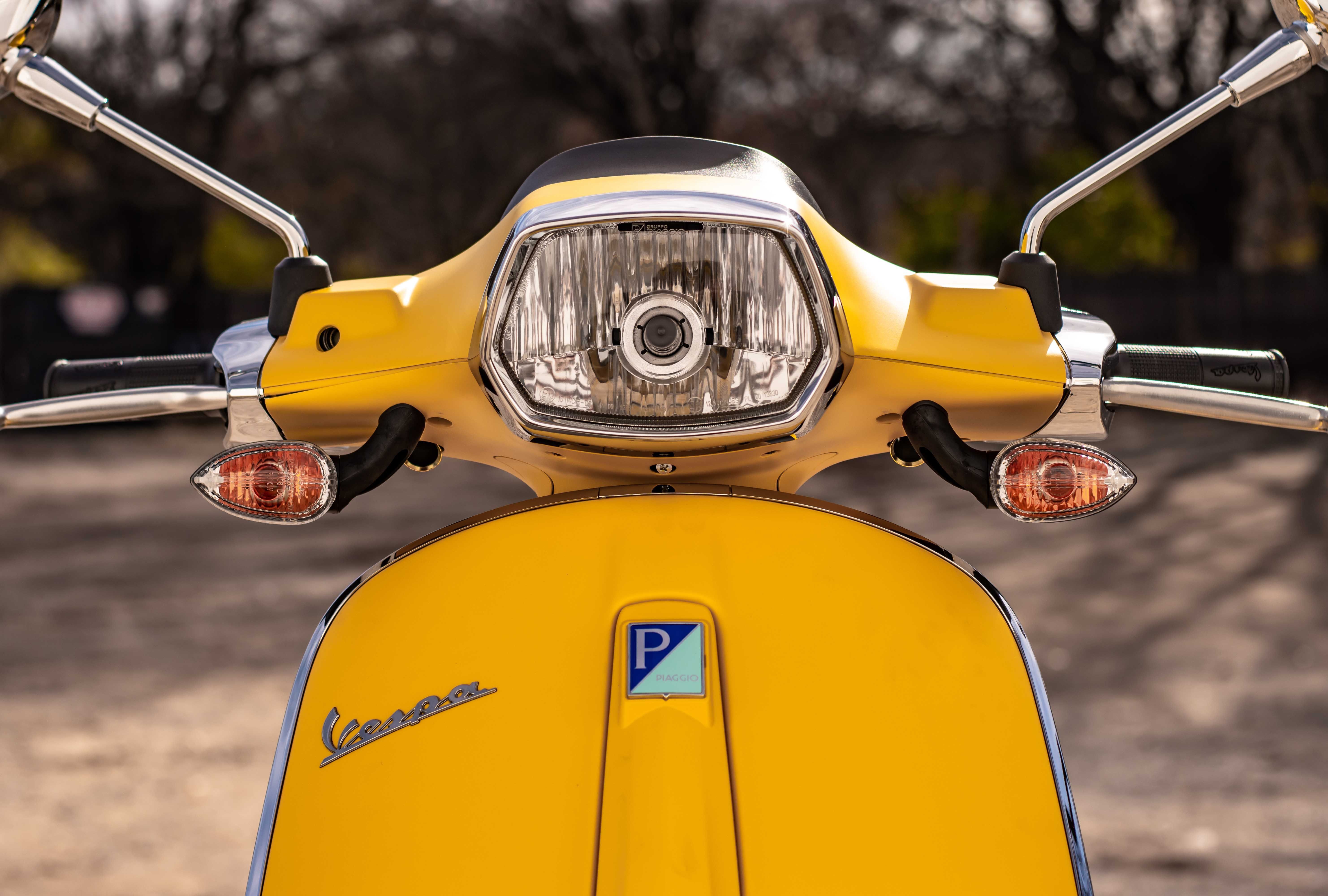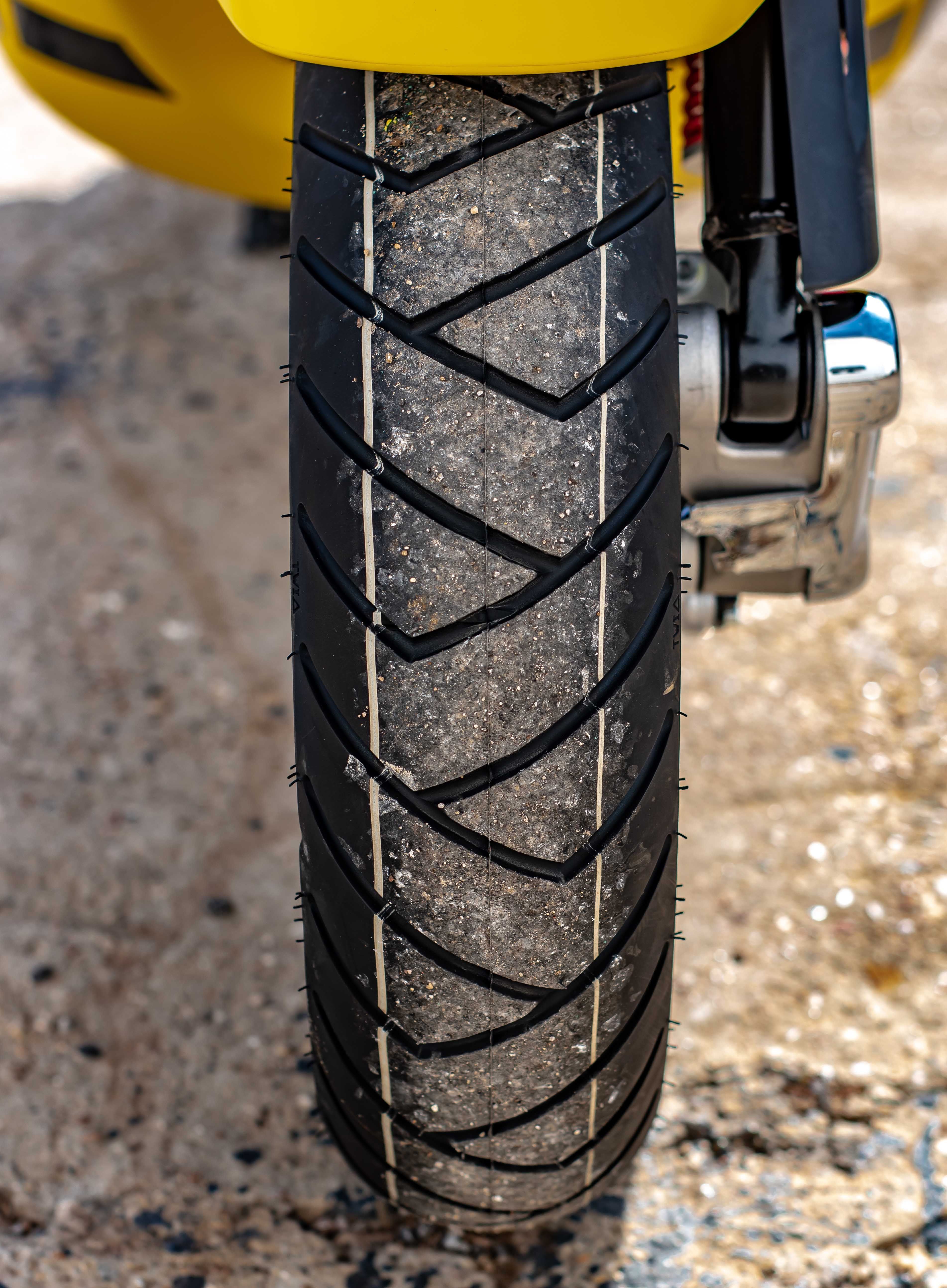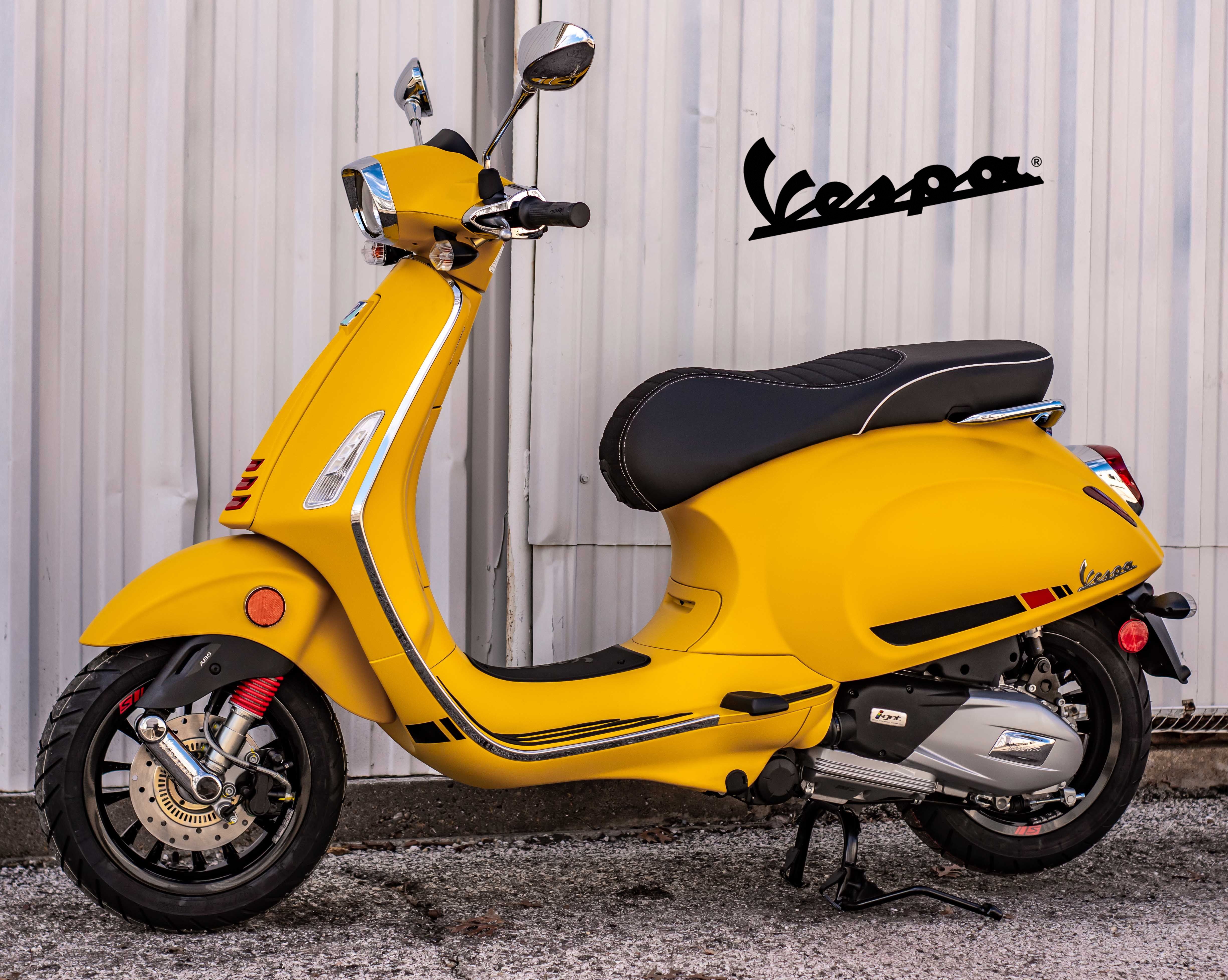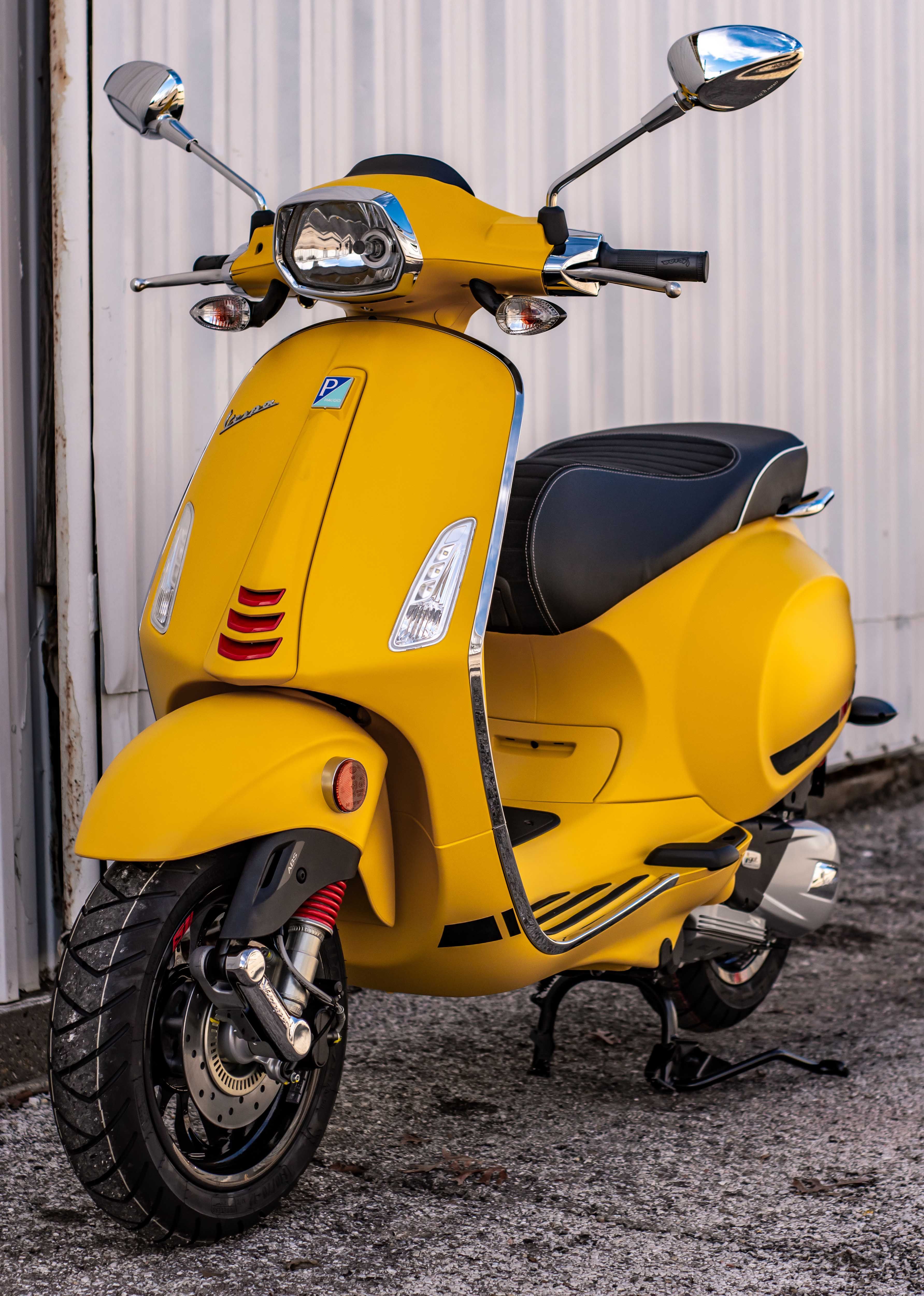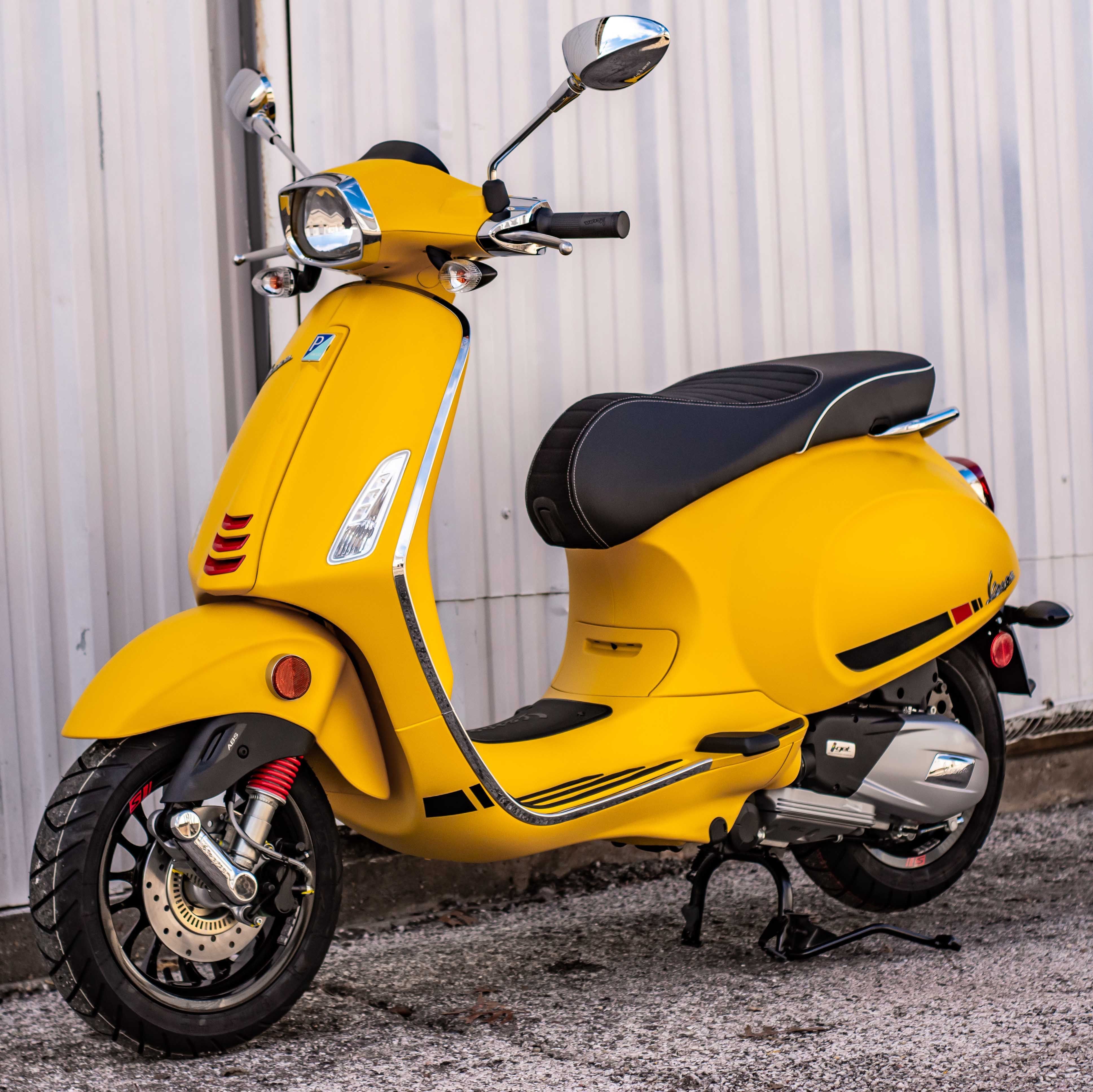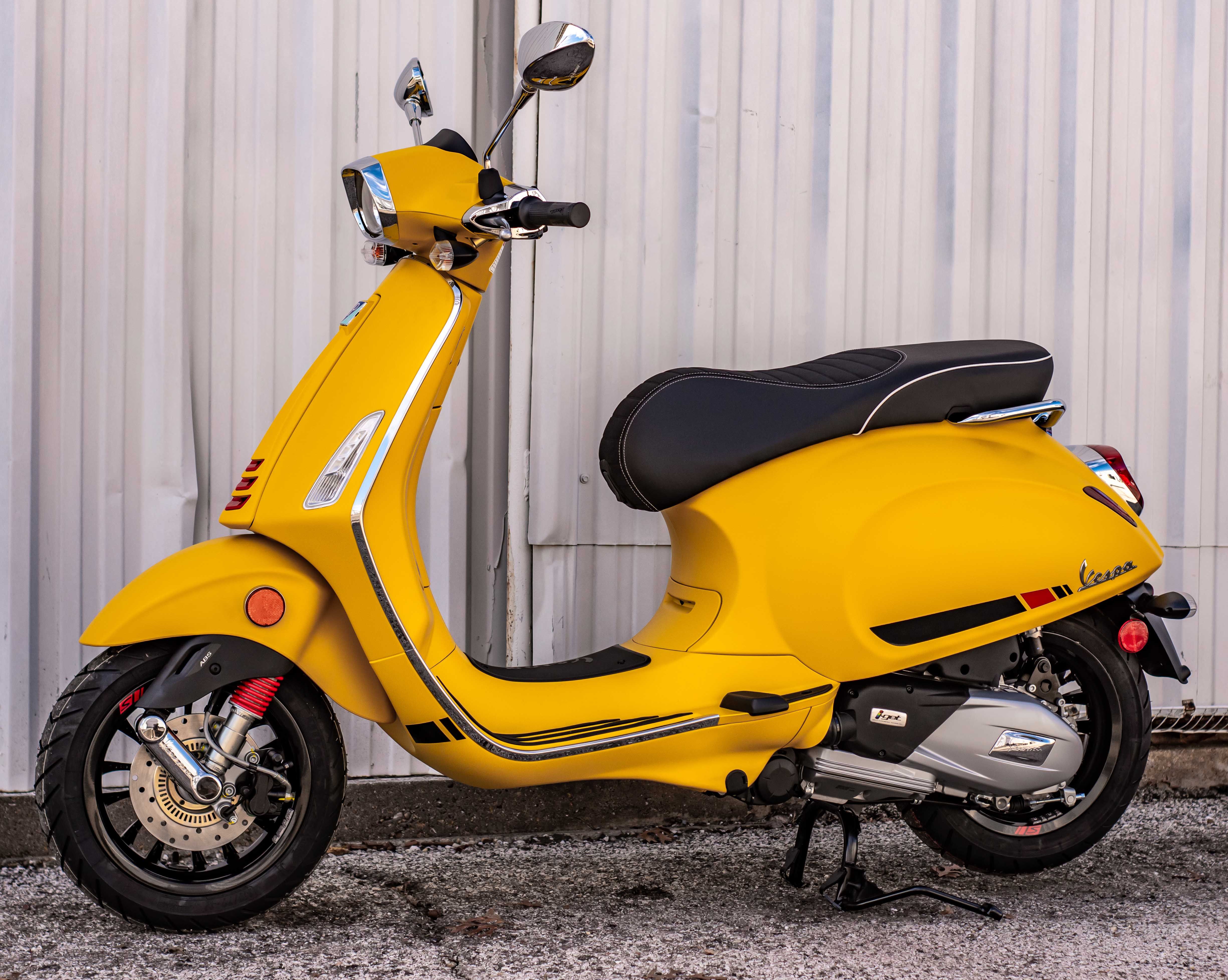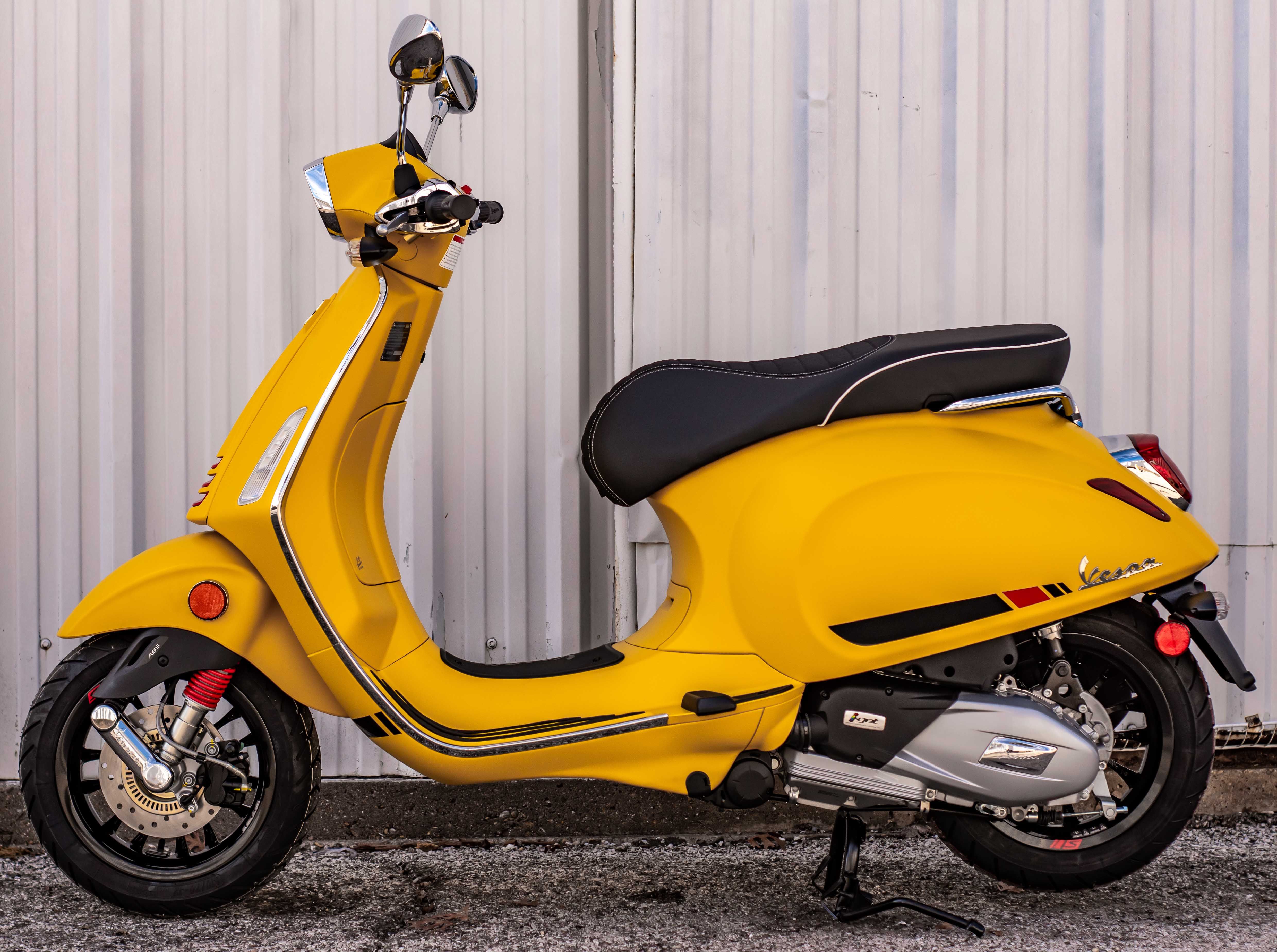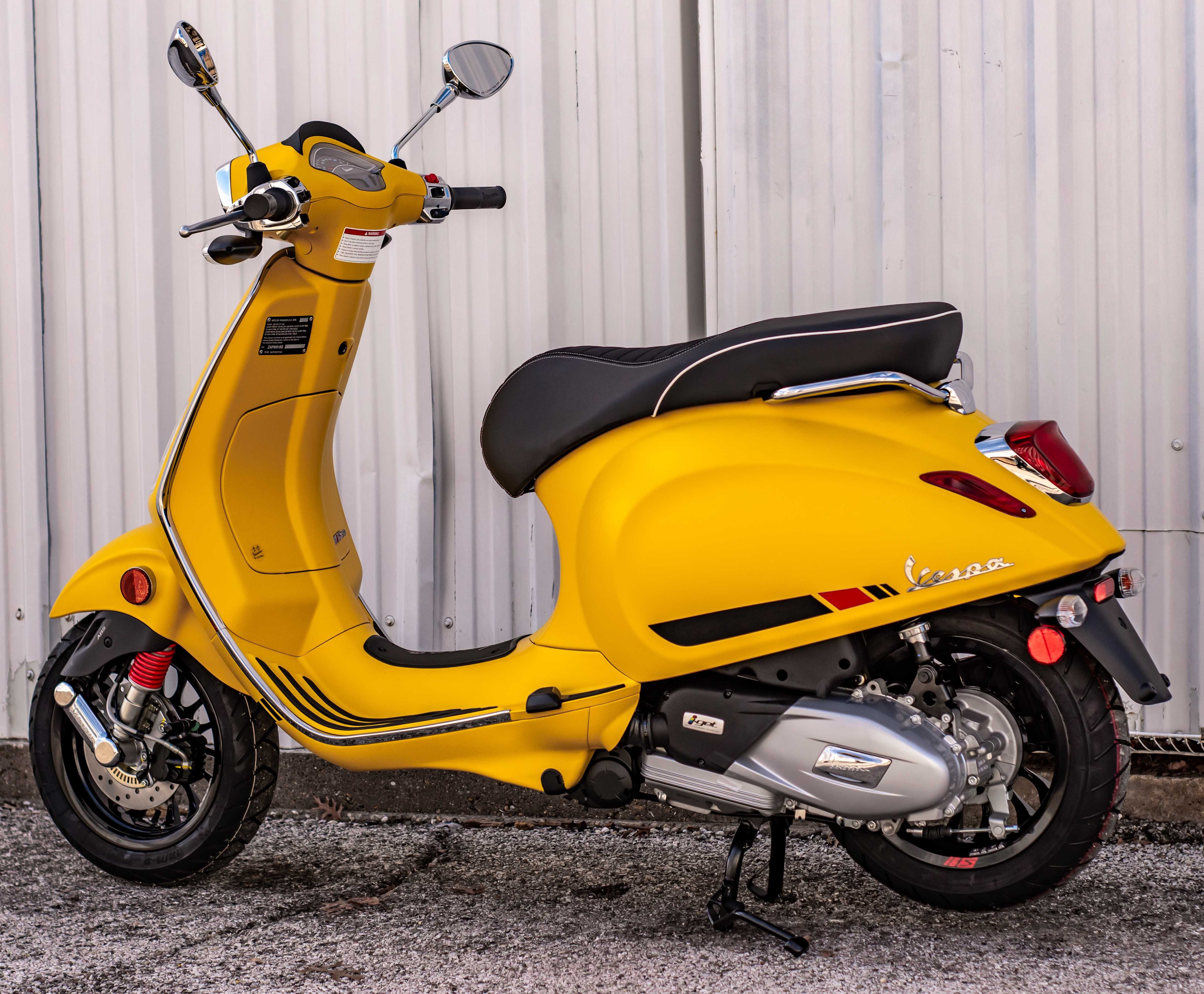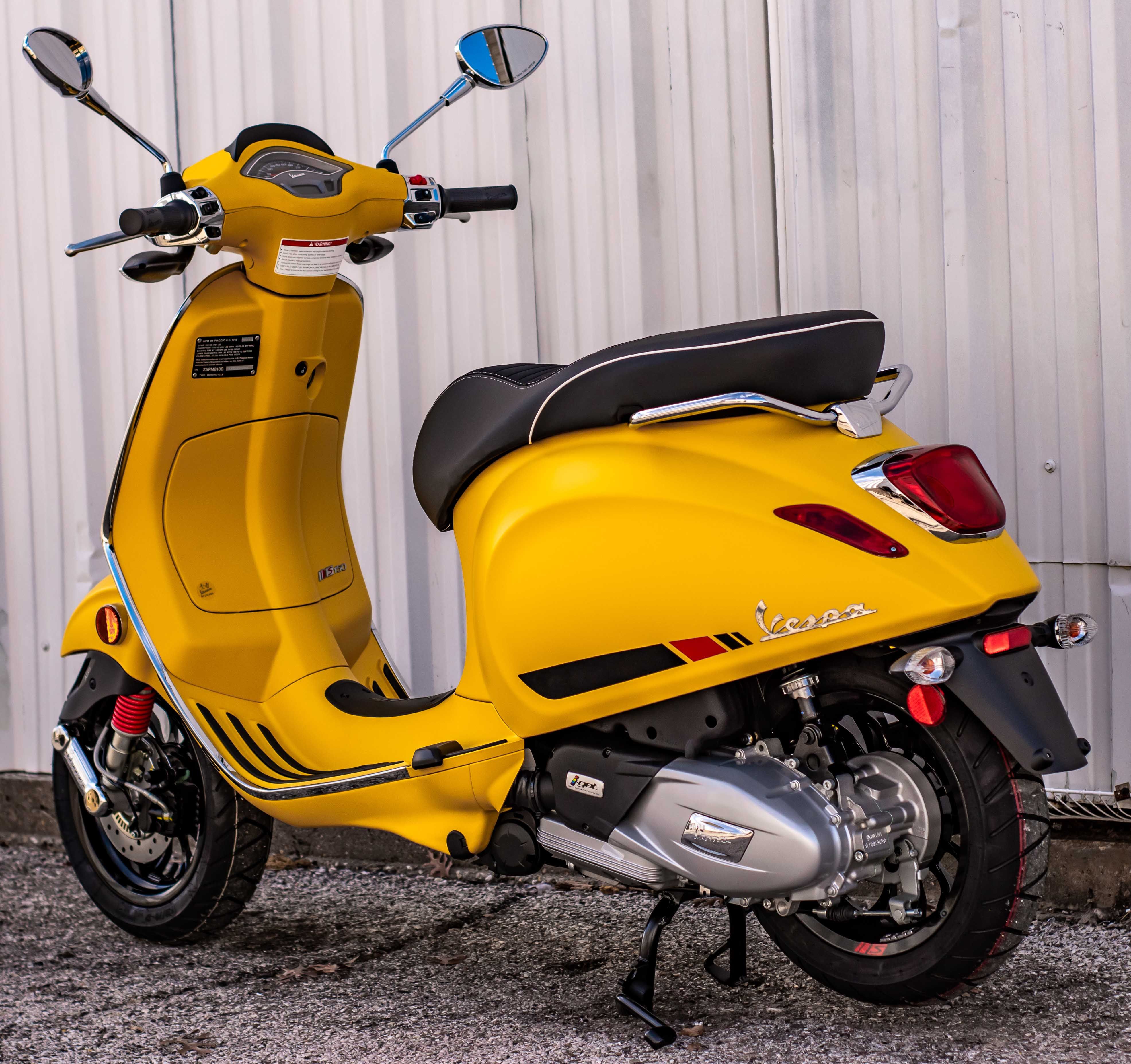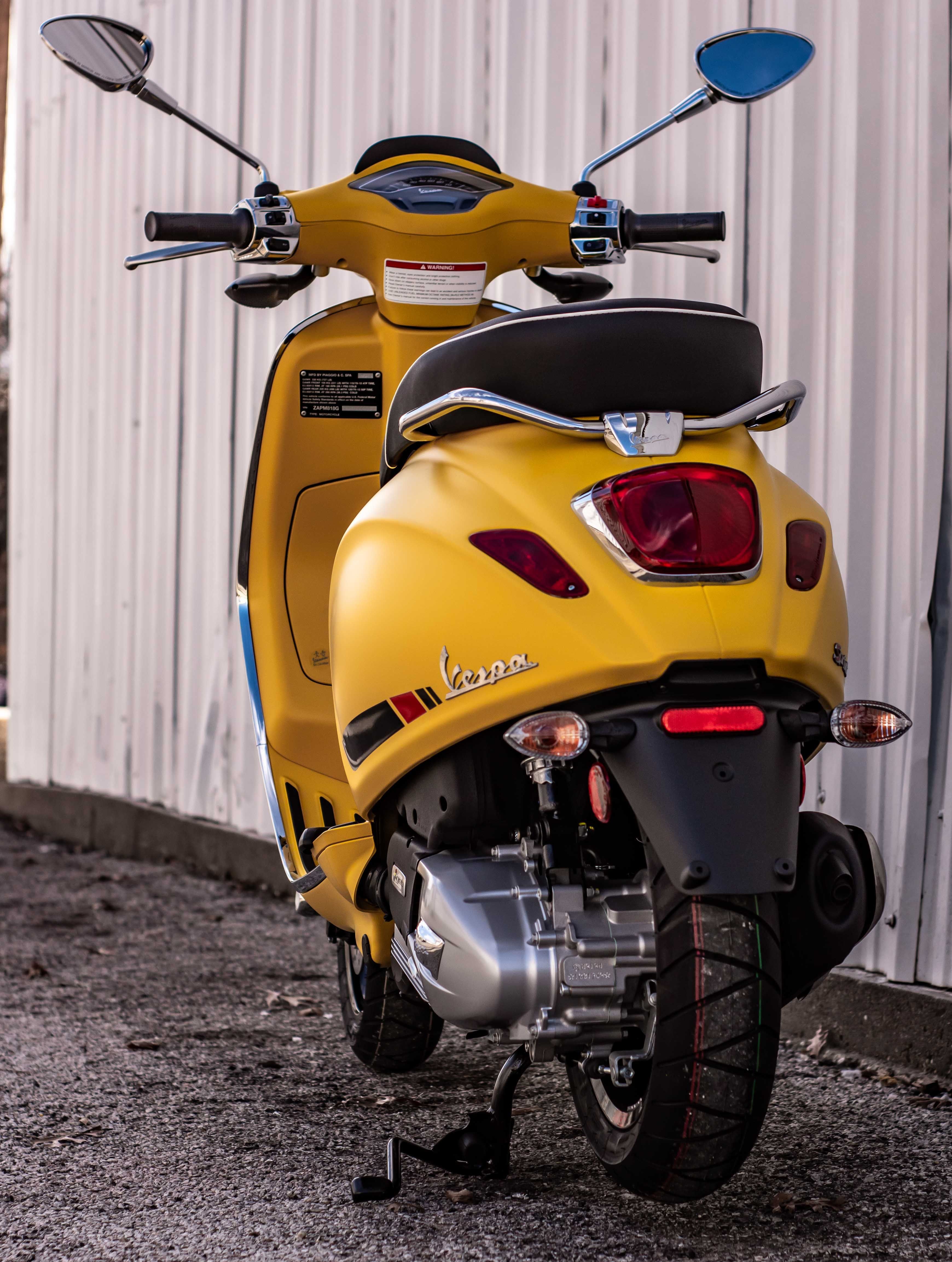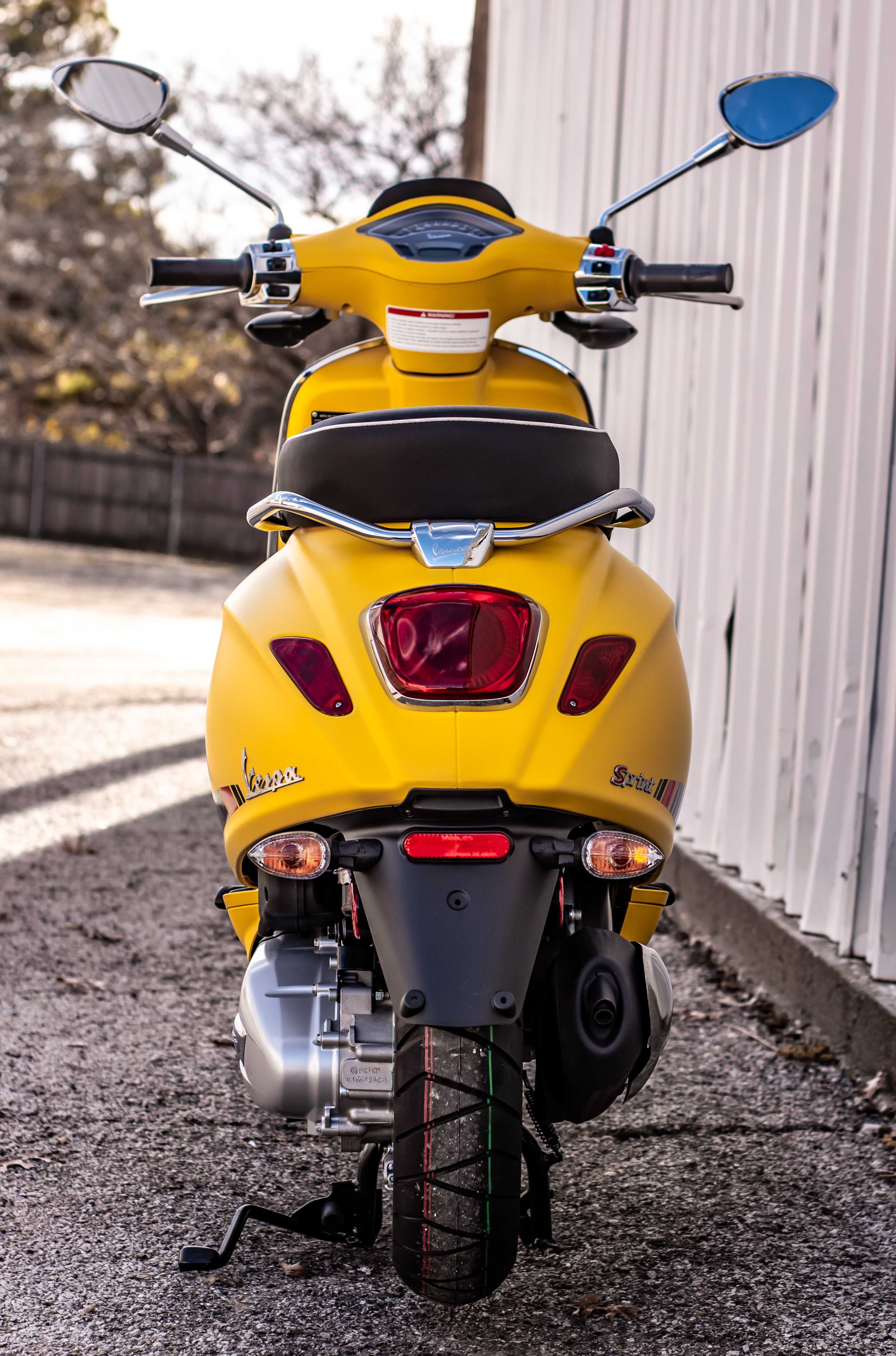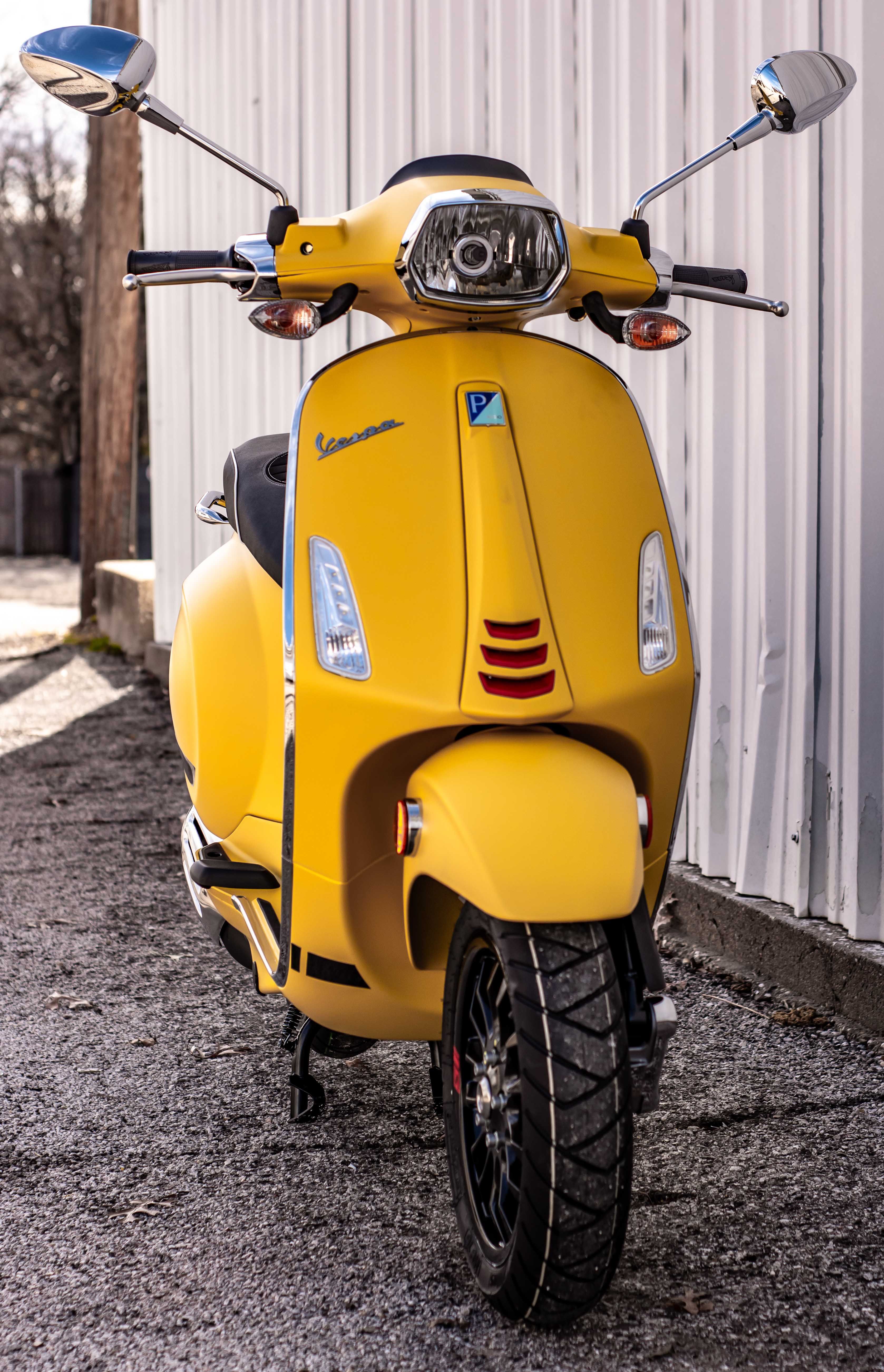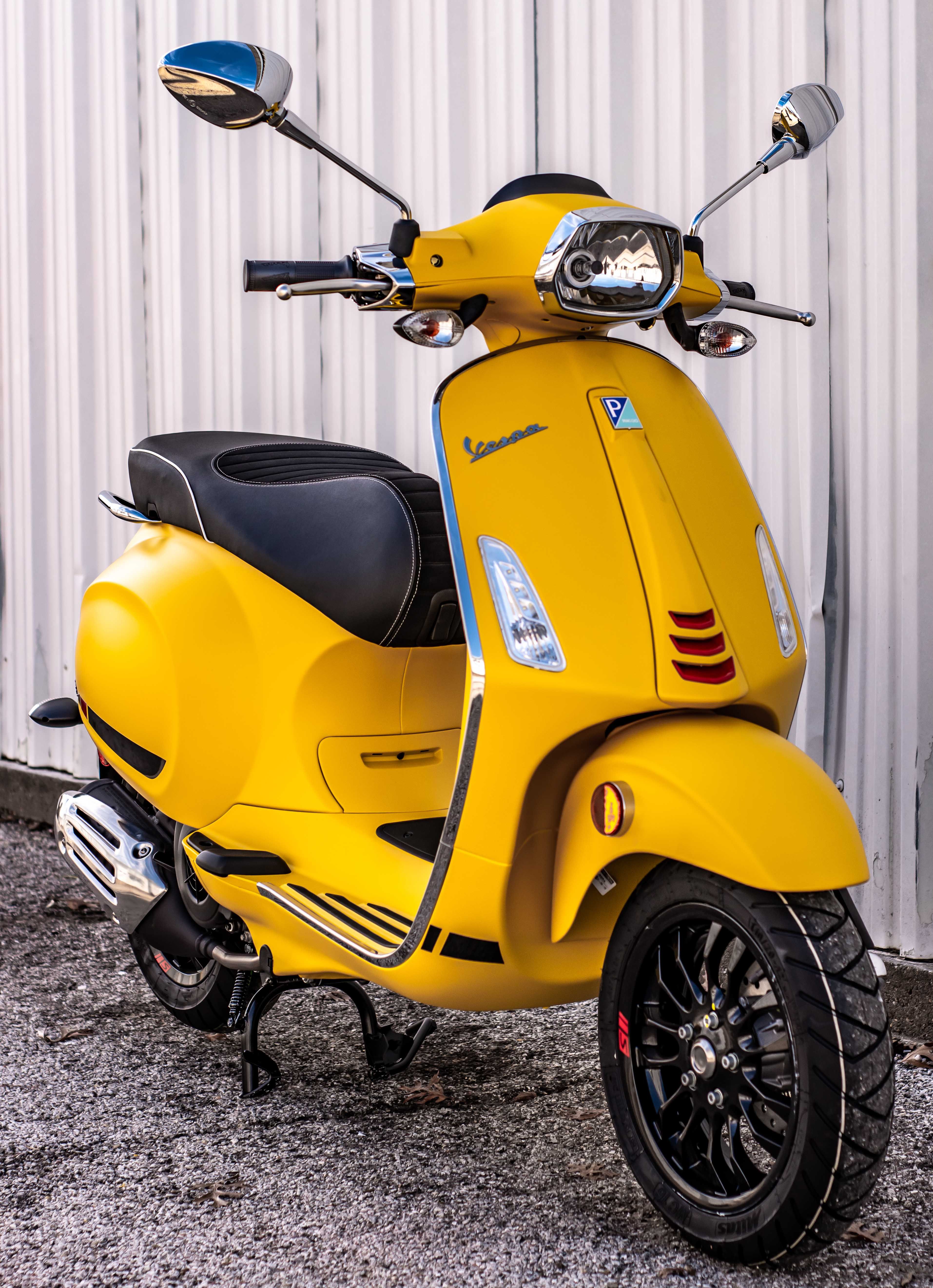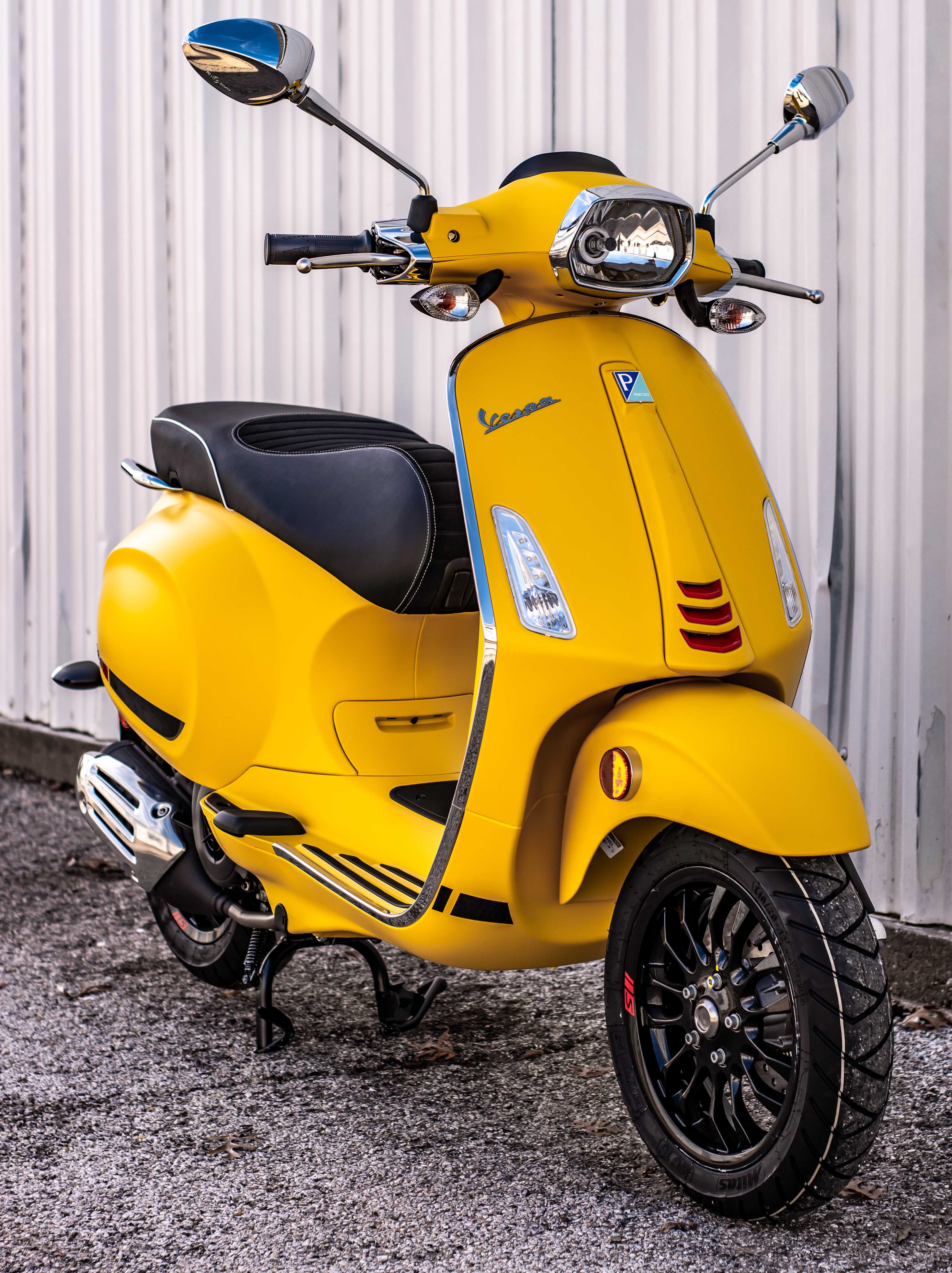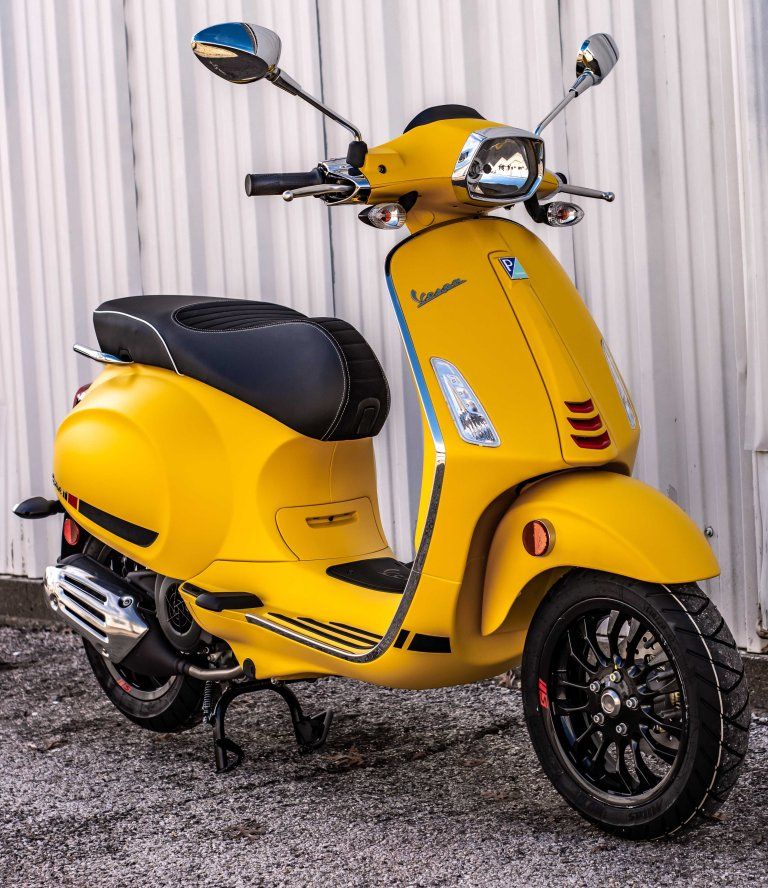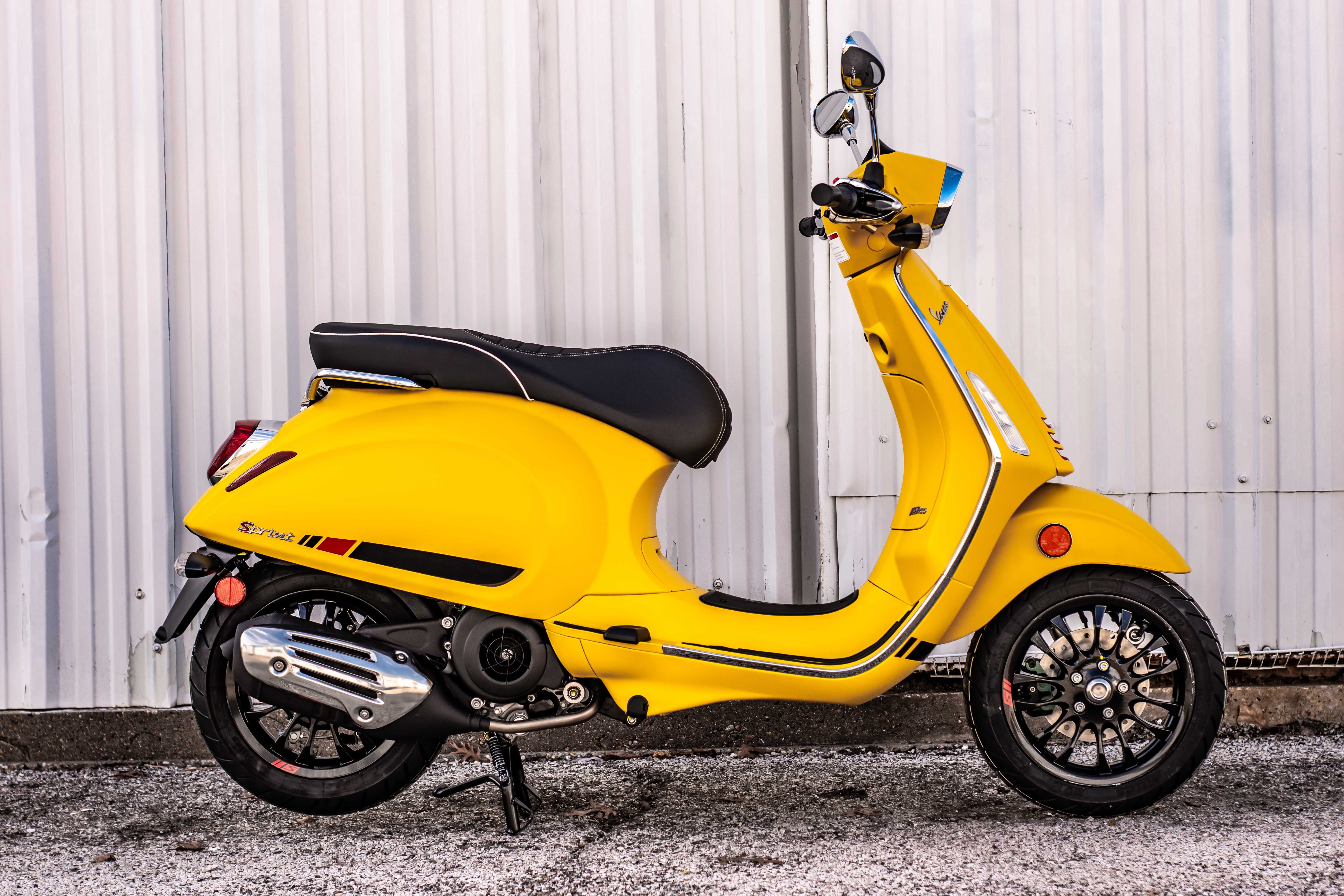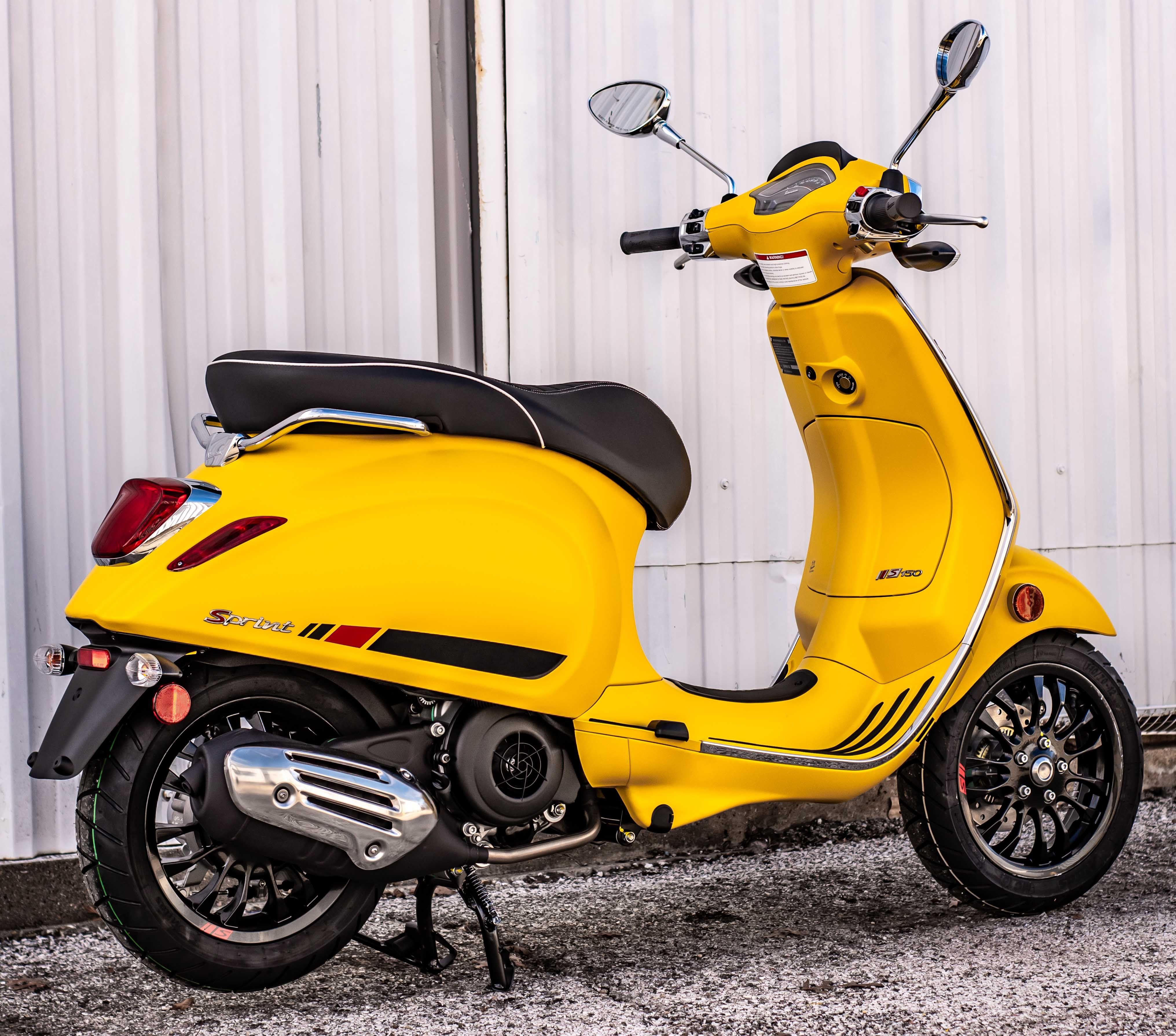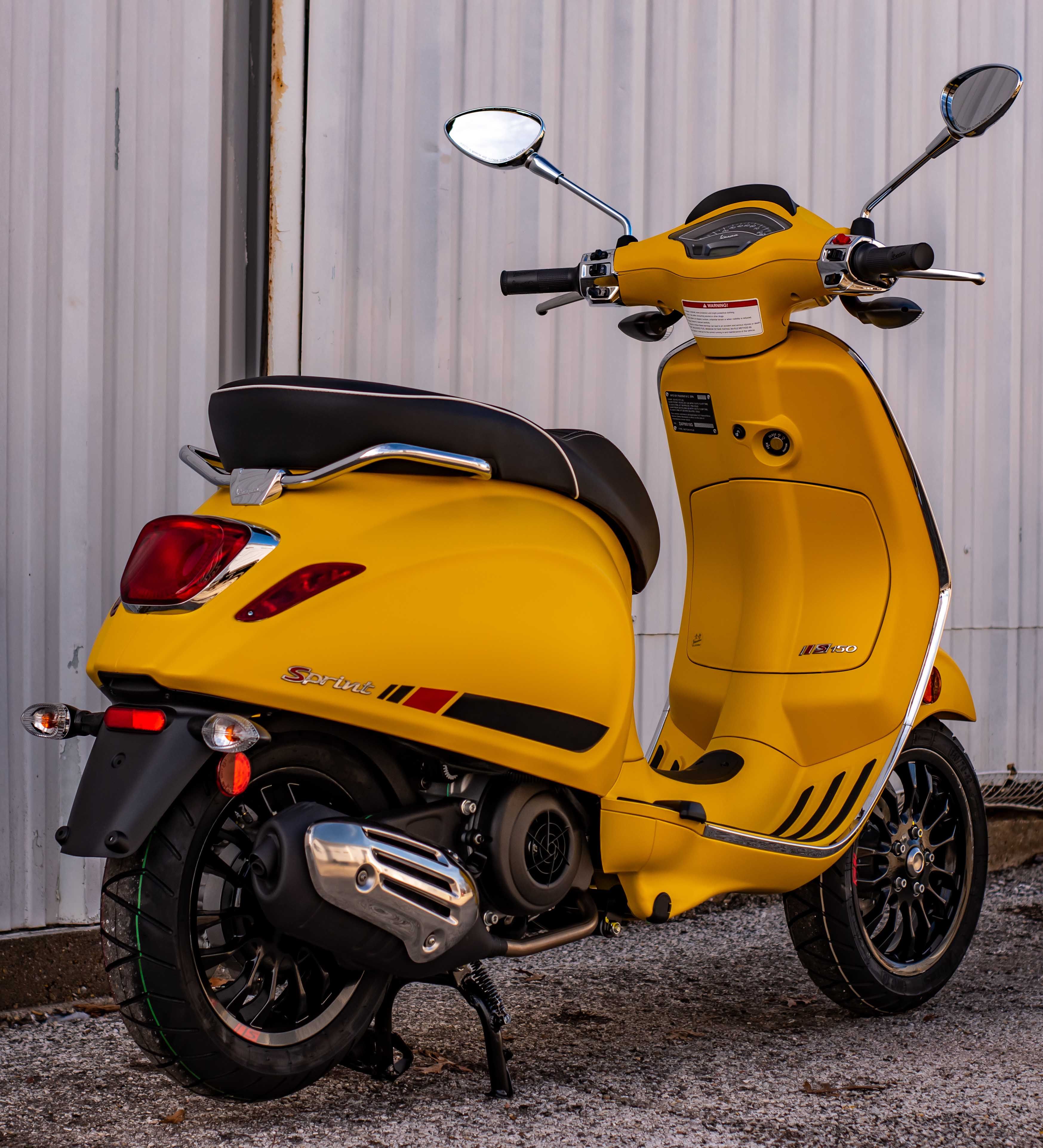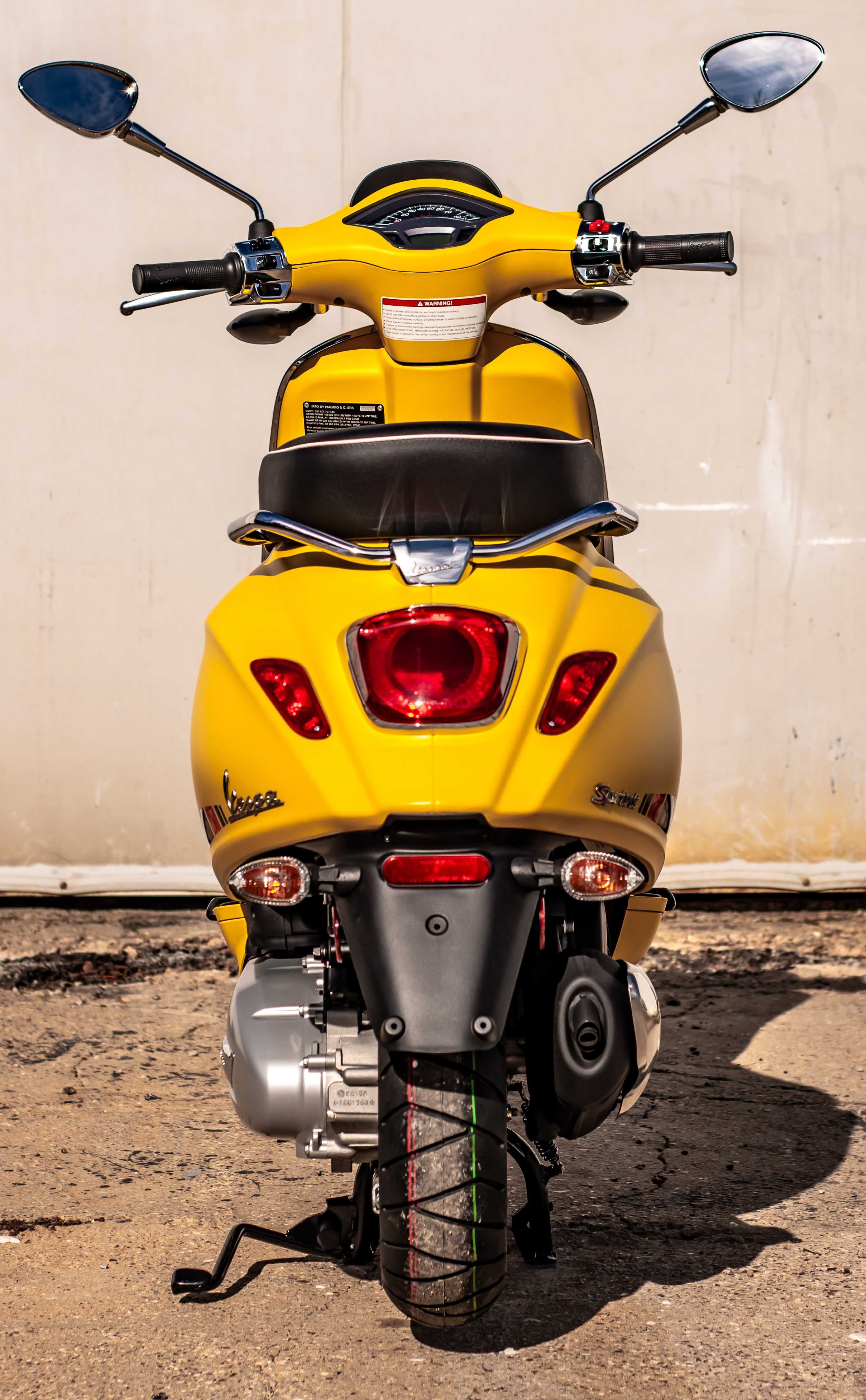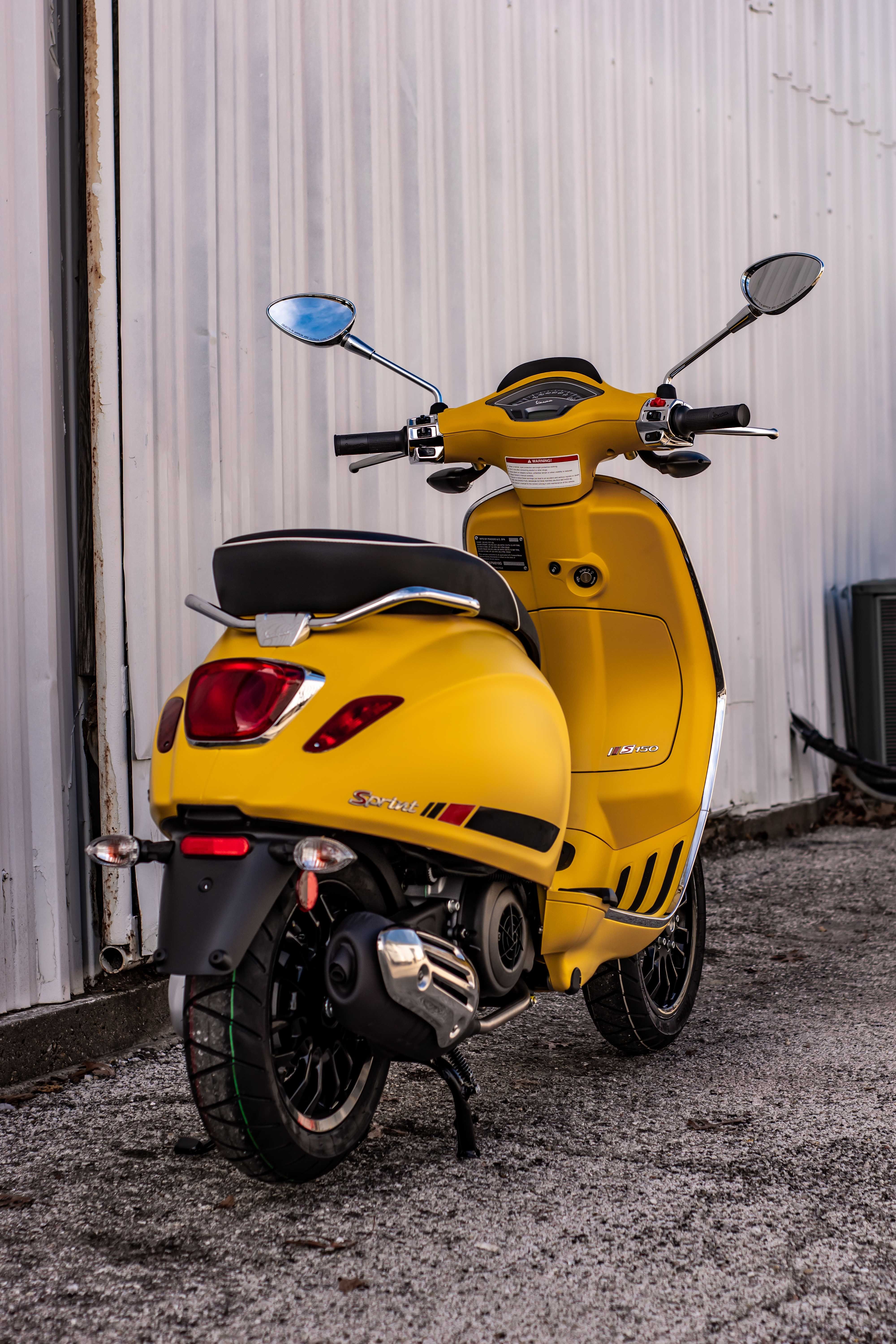Piaggio's Vespa division beefed up its small-frame Vespino offerings with the MY2018 Sprint 150 Sport that serves as the top-shelf unit for the model family. The Sport line comes in its own distinctive color packages with a sticker package that further sets it apart from its siblings, but it's the details that are less obvious at a glance that really makes the Sport special. Upgraded lighting and electronics boost safety and infotainment options as the icing on the cake.
2019 - 2020 Vespa Sprint 150 Sport
- Make: Array
- Model: 2019 - 2020 Vespa Sprint 150 Sport
- Engine/Motor: single cylinder
- [do not use] Vehicle Model: Array
Vespa Sprint 150 Sport Design
The Vespino (little wasp) is arguably one of the most recognized designs in all of scooterdom. (little wasp) is arguably one of the most recognized designs in all of scooterdom.}} That serves to reason since Piaggio/Vespa helped shape the scooter market in post-WWII Italy as it strove to provide affordable/reliable transportation for the masses within a shattered national infrastructure. Roots like that are impossible to fake, so the Sprint 150 Sport rolls with an authenticity all its own.
It starts in the high-mount front fender with its deep valence to control the spray from the front hoop in inclement weather. Sure, many of the old-school models carried their headlight down on the fender, and if you want that look I would direct you to the Sei Giorni Second Edition instead. This model carries its headlight in the handlebar fairing behind a flattened sextagonal lens with a duplex LED setup for the low- and high-beams.
LED tech continues into the blinkers, and here we find a difference between the European and U.S. models. The former has recessed turn signals set within the outboard edges of the legguard fairing for a very clean look, but due to traffic laws here, the U.S. models carry its blinkers in external, handlebar-mount bullet housings.
On the face of the fairing you'll find the classic “tie” detail complete with three contrast-painted chevrons and a newly-designed horn cover and a chrome brand script to finish it off. As with models past, the handlebar fairing serves as the instrument housing, but to modernize iy, the factory abandoned the analog speedo in favor of a color TFT display configurable to display the various metrics to suit. A handful of idiot lights round out the instrumentation, but the real star here is the stock Vespa Multimedia Platform that networks with your smartphone and lets you handle hands-free calls and jam to your saved tunes.
A small glove box below in the inner leg fairing comes complete with a power port that lets you charge your mobile devices under way. It doesn't hold much, but it's a trade off since it's the ABS module that displaces the room on the right side of the glove box.
A short tunnel protrudes up into the step-through with a non-skid plate on top that doubles as the battery cover, and at the front of the seat there's a hook for a little bit of open-air cargo-carrying capacity. Underseat dry storage holds a single full-face bucket, and the lockable seat can be released wirelessly through the key fob or manually via the release tab in the glove box.
There's room on the footboards and the seat for a passenger, and the chrome J.C. handle gives them something to hold on to besides yourself. Like the front, the rear blinkers come in external bullet fairings with a taillight that rocks an LED horseshoe behind a square lens to finish out the rear lighting.
Vespa Sprint 150 Sport Chassis
The Sprint family relies on a monocoque structure that uses the stamped sheet-metal panels and welded reinforcement plates for its strength structure that uses the stamped sheet-metal panels and welded reinforcement plates for its strength}}, all in the absence of any kind of underframe assembly. Result? A light-yet-strong body that leaves plenty of room under the skin for the innards for an easy-to-work-on machine.
Vespa also goes its own way in the front suspension with the old-school, aircraft landing-gear that has a trailing link and coil-over shock to absorb the bumps in the road. Suspension travel is predictably short at 3.0 inches up front and 2.75 inches out back. While the front shock is fixed in its values, the rear shock comes with four preload presets to let you dial in for changing cargo/passenger loads.
A 200 mm disc and juice caliper slows the front wheel under the protection of the stock ABS feature, but the rear brake is all about the old school with its 140 mm, mechanical-drum brake. Cast aluminum is the material of choice for the 12-inch wheels that mount a 110/70 and 120/70 hoop to give the Sport its “small-wheel” look.
|
Front suspension/Wheel travel: |
Single arm with coil spring and dual action monoshock absorber/ 3.0 in (78 mm0 |
|
Rear suspension/Wheel travel: |
Coil spring with adjustable preload (4 settings), and dual action hydraulic monoshock/ 2.8 in (70 mm0 |
|
Front wheel: |
Die-cast aluminum alloy 3.00 x12” |
|
Rear wheel: |
Die-cast aluminum alloy 3.00 x12” |
|
Front tire: |
Tubeless 110/70-12" |
|
Rear tire: |
Tubeless 120/70-12” |
|
Front brake: |
Hydraulically operated 200 mm ø stainless steel disc brake. Single channel ABS anti-lock system |
|
Rear brake: |
Mechanically operated 140 mm ø drum brake |
Vespa Sprint 150 Sport Drivetrain
It's the powerplant that makes the Sprint 150 Sport such a “green friendly” machine with its 94 mpg fuel-economy rating. That pairs with the two-gallon gas tank under the seat to give it a respectable range to boot.
The forced air-cooled thumper rocks a 58 mm bore and 58.6 mm stroke for a total displacement of 154.8 cc. It relies on a single over-head cam to actuate the three valves in the head. The Sprint has a throttle body and electronic port fuel injection to deliver the dyno-juice with an atmospheric-pressure detector to help maintain a proper stoichiometric ratio.
Scooter riders are accustomed to twist-and-go operation, and the Sprint 150 is no exception. A dry, centrifugal clutch couples engine power to the constant-velocity transmission with an overall drive ratio that turns out a top speed around 70 mph at the redline. The power figures are respectable with 12.9 horsepower on tap at 7,750 rpm backed up by 9.4 pound-feet of torque at 6,500 rpm.
|
Engine: |
4 stroke single cylinder with electronic injection |
|
Bore x Stroke: |
58 mm x 58.6 mm |
|
Displacement: |
154.8 cc |
|
Max Power: |
12.9 hp (9.5 kW) @ 7,750 rpm |
|
Max Torque: |
9.4 lb-ft (12.8 Nm) @ 6,500 rpm |
|
Distribution: |
SOHC (single overhead cam), 3 valves per cylinder |
|
Fuel system: |
New Electronic Injection PFI (Port Fuel Injection) |
|
Cooling: |
Forced air |
|
Lubrication: |
Wet sump |
|
Starter: |
Electric |
|
Clutch: |
Automatic dry centrifugal clutch with vibration dampers |
|
Transmission: |
CVT with torque server |
Vespa Sprint 150 Sport Pricing
The stock 2020 Sprint 150 Sport rolls for $5,749 MSRP. It comes in a choice between two special “Sport” paint packages, a glossy gray Grigio Materia and a satin blue Blu Vivace.
|
Color: |
Grigio Materia, Blu Vivace |
|
Price: |
$5,749 |
Vespa Sprint 150 Sport Competitors
There are plenty of scooter builders around the world, but since the Sprint 150 Sport is a top-drawer product, I wanted to find some competitors that are, as well. The Yamaha Zuma 125 borrows from the Italian style while putting its own spin on things, so let's roll with that.
Yamaha Zuma 125
The headlight on the Zuma 125 is mounted in the legguard and the handlebar is naked to give the front a much different finish than the Sprint. It relies on an underframe for its structure, so the step-through deck is flush all the way across to allow for more 'tween-the-feet-stowage than the less-generous Sprint.
The rear end is cut back to expose more of the rear wheel, and set next to the classic wasp-tail Vespa, it doesn't have the visual appeal the Eye-Tie brings to the table. Yamaha uses hydraulic forks to support the front end instead of the shock-and-link system favored by Vespa. This means the Zuma looks more like a proper motorcycle as far as the front fork goes, but without any adjustments, there really is no advantage one way or the other.
Yamaha gets a leg up on the competition with all-around disc brakes, but the trade off is that Yamaha sends the Zuma out the door without ABS protection. Power comes from a 125 cc, four-valve four-stroke mill with 7 pound-feet of torque to fall short of the Vespa's grunty 9.4-pound performance, and top speed takes a hit as well with around 61 mph at the top end.
Vespa isn't one to use price as a selling point, so that leaves room for a minor win for the Yamaha Zuma at the checkout with its $3,499 price tag.
Read our full review of the Yamaha Zuma 125.
He Said
“Cute little ride, and certainly more handy around town than the 50 cc version. At 70 mph, it technically qualifies as interstate capable, though personally, I won't hit the superslab on anything that won't do at least 90 mph to keep from being run over by the folks who want to do 100 or so. That said, it's fine for highways and faster inner-city streets.”
She Said
My wife and fellow motorcycle writer, Allyn Hinton, says, “I'd have to agree with my husband on some points. Legally, the 154 cc engine is allowed on the Interstate, but if I have to wind it up to its top speed and keep it there the whole trip, that leaves nothing in the way of roll-on. It's better to stay on main arteries and secondary roads. That being said, the Sprint 150 Sport is a true to its name in that it's a sporty ride, both responsive and energetic. The 12-inch wheels give better handling and better ride quality than the previous 11 inchers, in my opinion. Of course bigger wheels would improve that even more, but for what it is, it's a nice scooter, albeit a little pricey.”
Vespa Sprint 150 Sport Specifications
|
Engine & Drivetrain: |
|
|
Engine: |
4 stroke single cylinder with electronic injection |
|
Bore x Stroke: |
58 mm x 58.6 mm |
|
Displacement: |
154.8 cc |
|
Max Power: |
12.9 hp (9.5 kW) @ 7,750 rpm |
|
Max Torque: |
9.4 lb-ft (12.8 Nm) @ 6,500 rpm |
|
Distribution: |
SOHC (single overhead cam), 3 valves per cylinder |
|
Fuel system: |
New Electronic Injection PFI (Port Fuel Injection) |
|
Cooling: |
Forced air |
|
Lubrication: |
Wet sump |
|
Starter: |
Electric |
|
Clutch: |
Automatic dry centrifugal clutch with vibration dampers |
|
Transmission: |
CVT with torque server |
|
Chassis: |
|
|
Load Bearing Structure: |
Sheet steel body with welded reinforcements |
|
Front suspension/Wheel travel: |
Single arm with coil spring and dual action monoshock absorber/ 3.0 in (78 mm) |
|
Rear suspension/Wheel travel: |
Coil spring with adjustable preload (4 settings), and dual action hydraulic monoshock/ 2.8 in (70 mm) |
|
Front wheel: |
Die-cast aluminum alloy 3.00 x12” |
|
Rear wheel: |
Die-cast aluminum alloy 3.00 x12” |
|
Front tire: |
Tubeless 110/70-12" |
|
Rear tire: |
Tubeless 120/70-12” |
|
Front brake: |
Hydraulically operated 200 mm ø stainless steel disc brake. Single channel ABS anti-lock system |
|
Rear brake: |
Mechanically operated 140 mm ø drum brake |
|
Dimensions & Capacities: |
|
|
Length x Width: |
73.6 in x 28.9 in (1,870 mm x 735 mm) |
|
Saddle height: |
31.1 in (790 mm) |
|
Wheelbase: |
52.7 in (1,340 mm) |
|
Fuelcapacity: |
2.1 gal including 0.5-gal reserve (8 liters (including 2-liter reserve) |
|
Fuel economy: |
94.7 mpg (40.3 km/l) |
|
Approval: |
Euro 4 |
|
Details: |
|
|
Color: |
Grigio Materia, Blu Vivace |
|
Price: |
$5,749 |
Further Reading
Vespa
Read more Vespa news.

